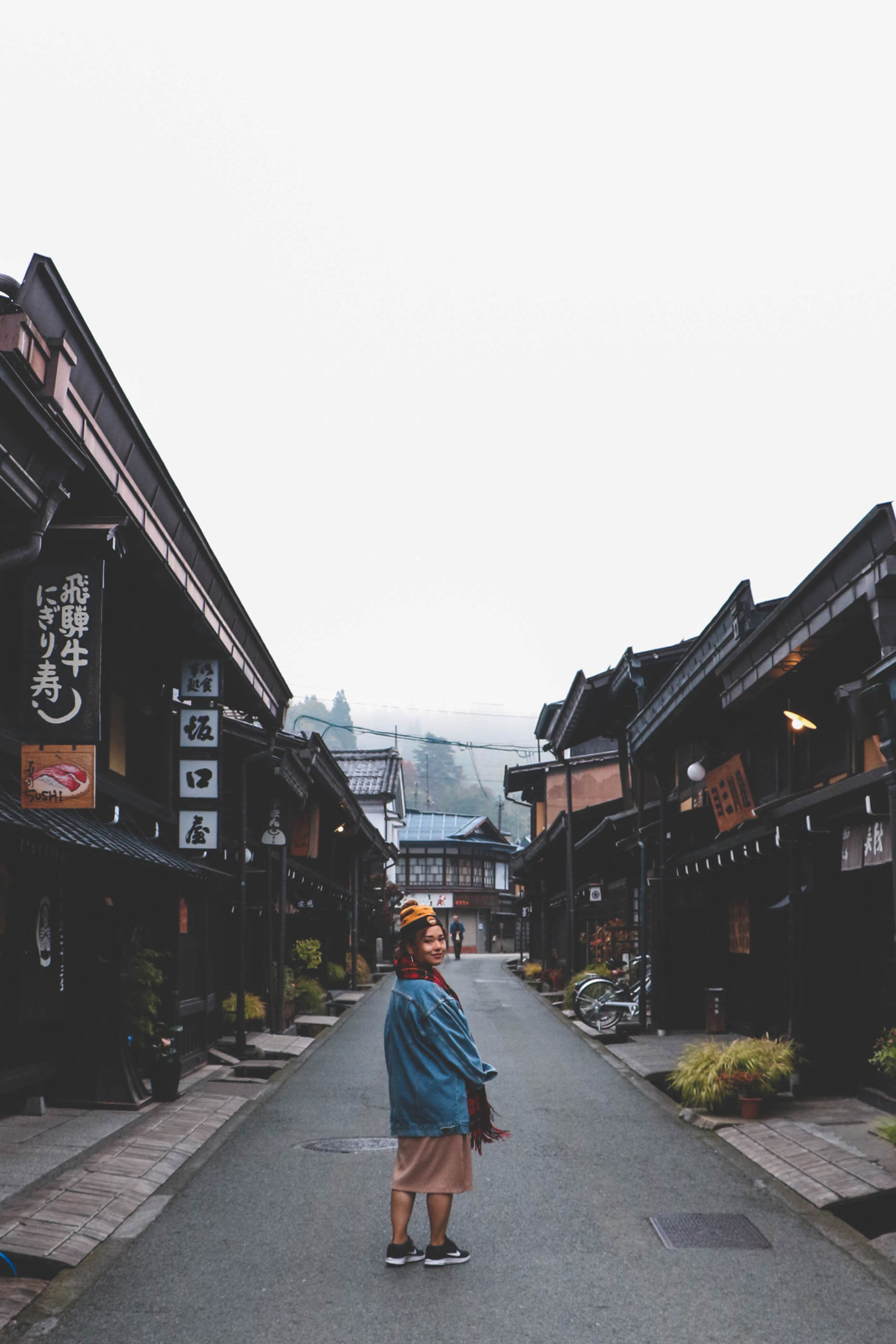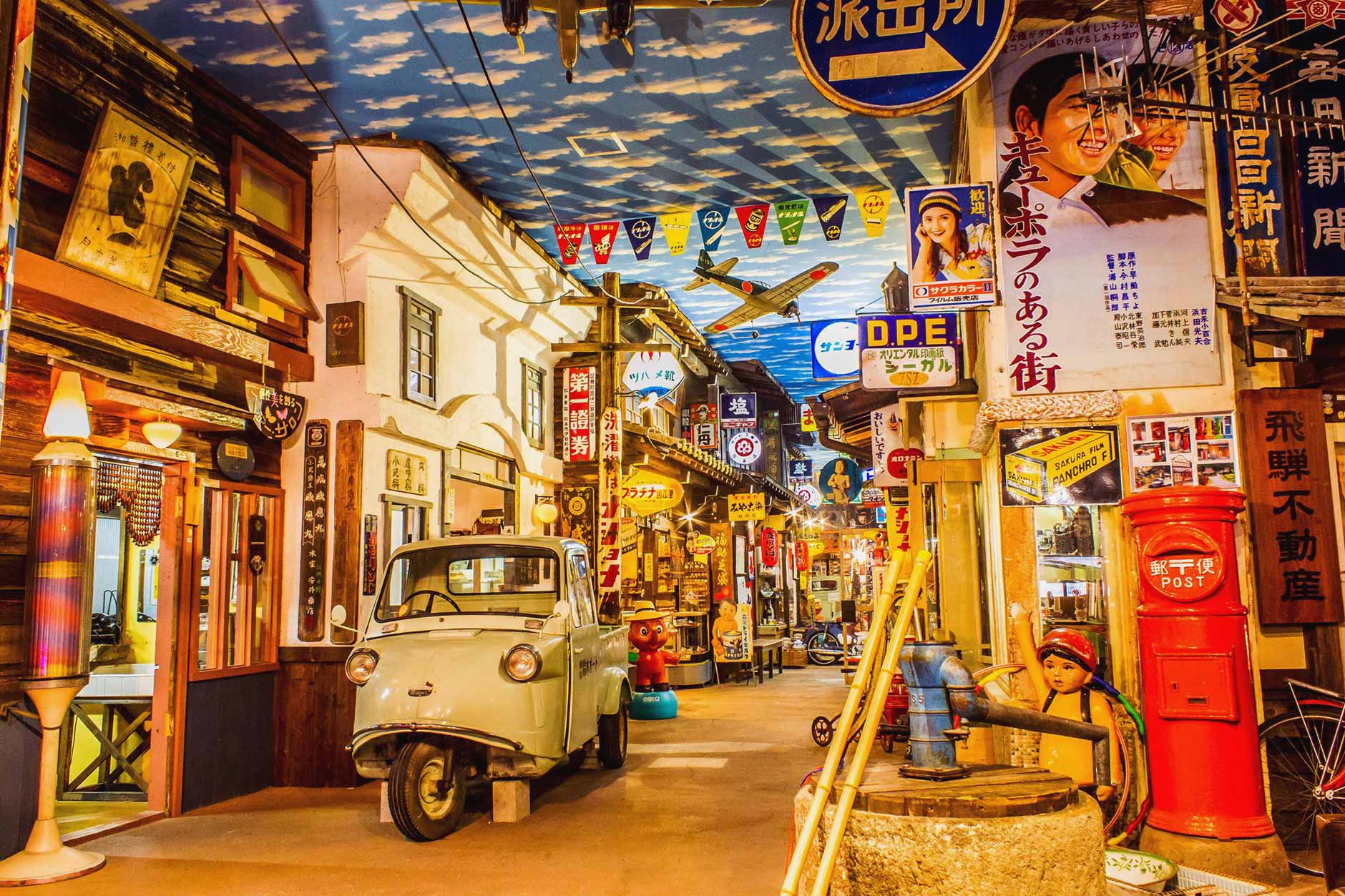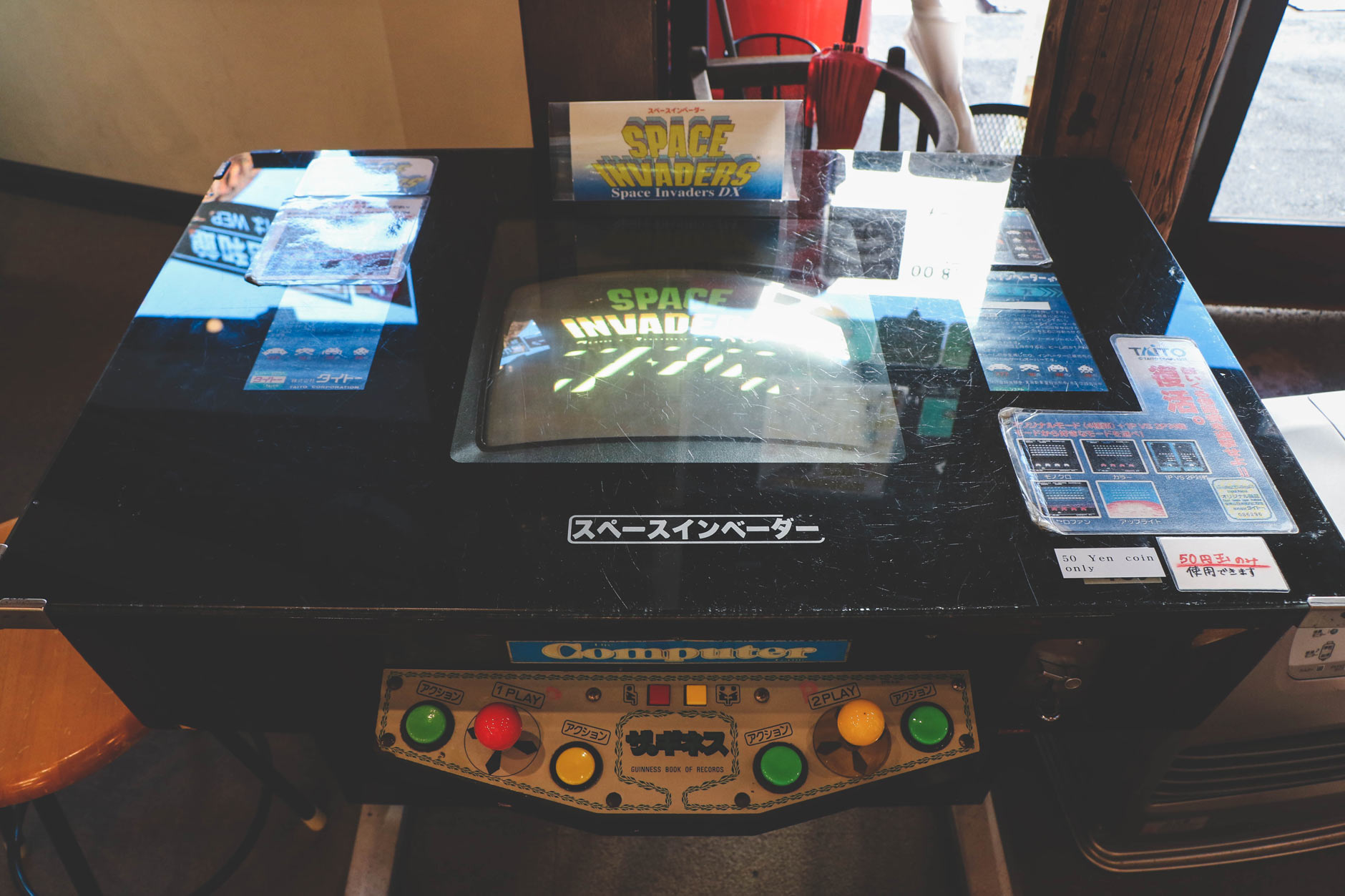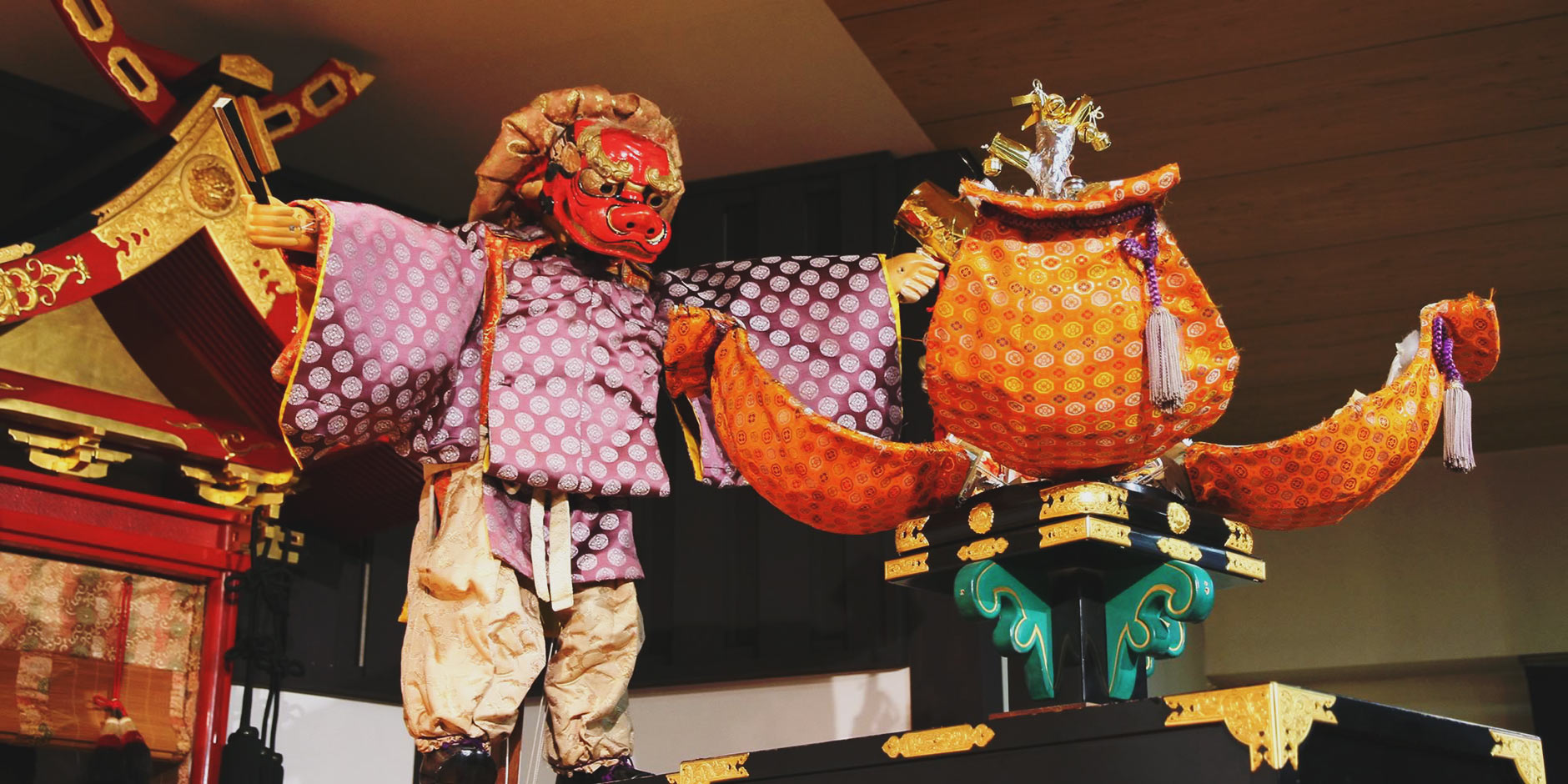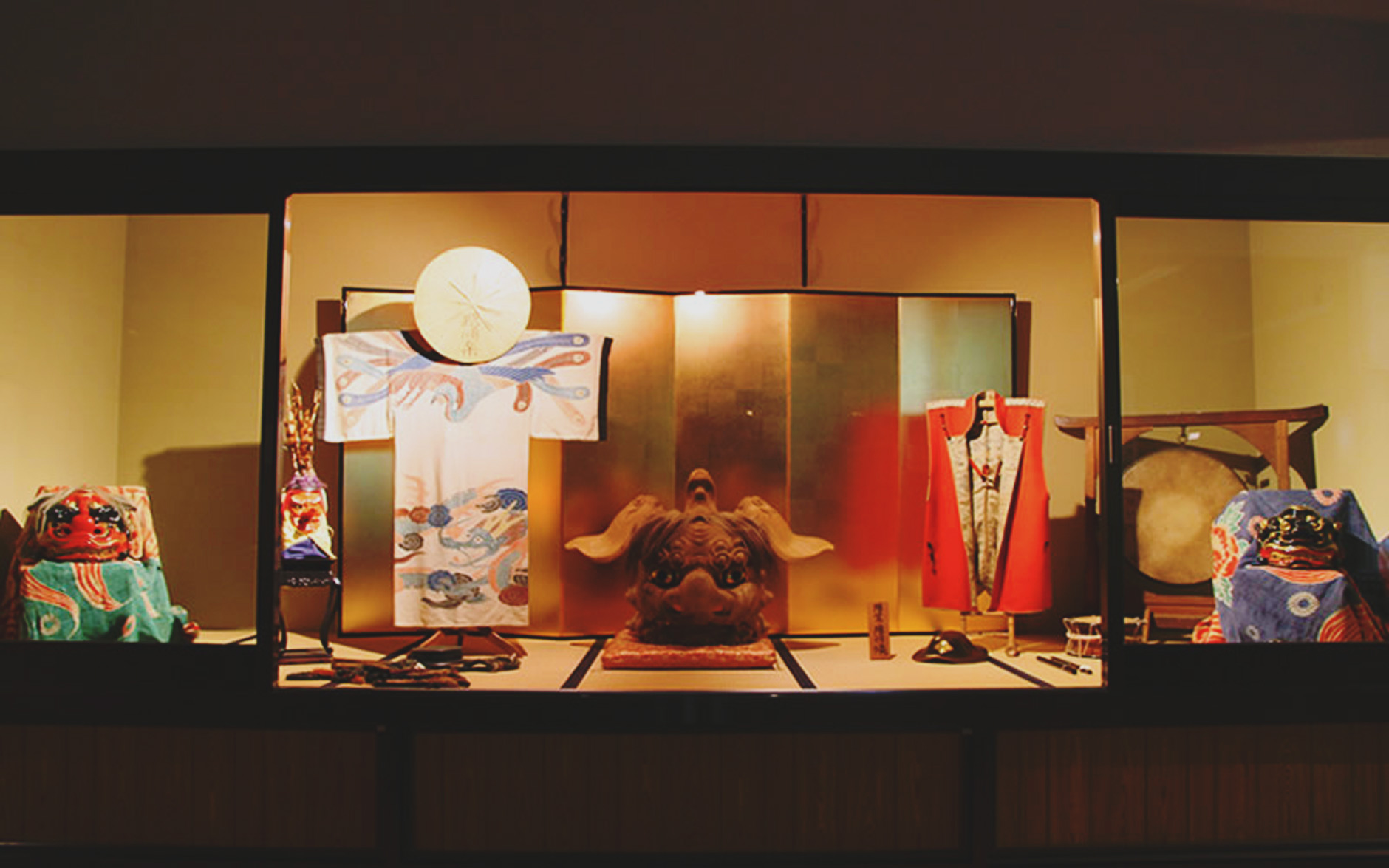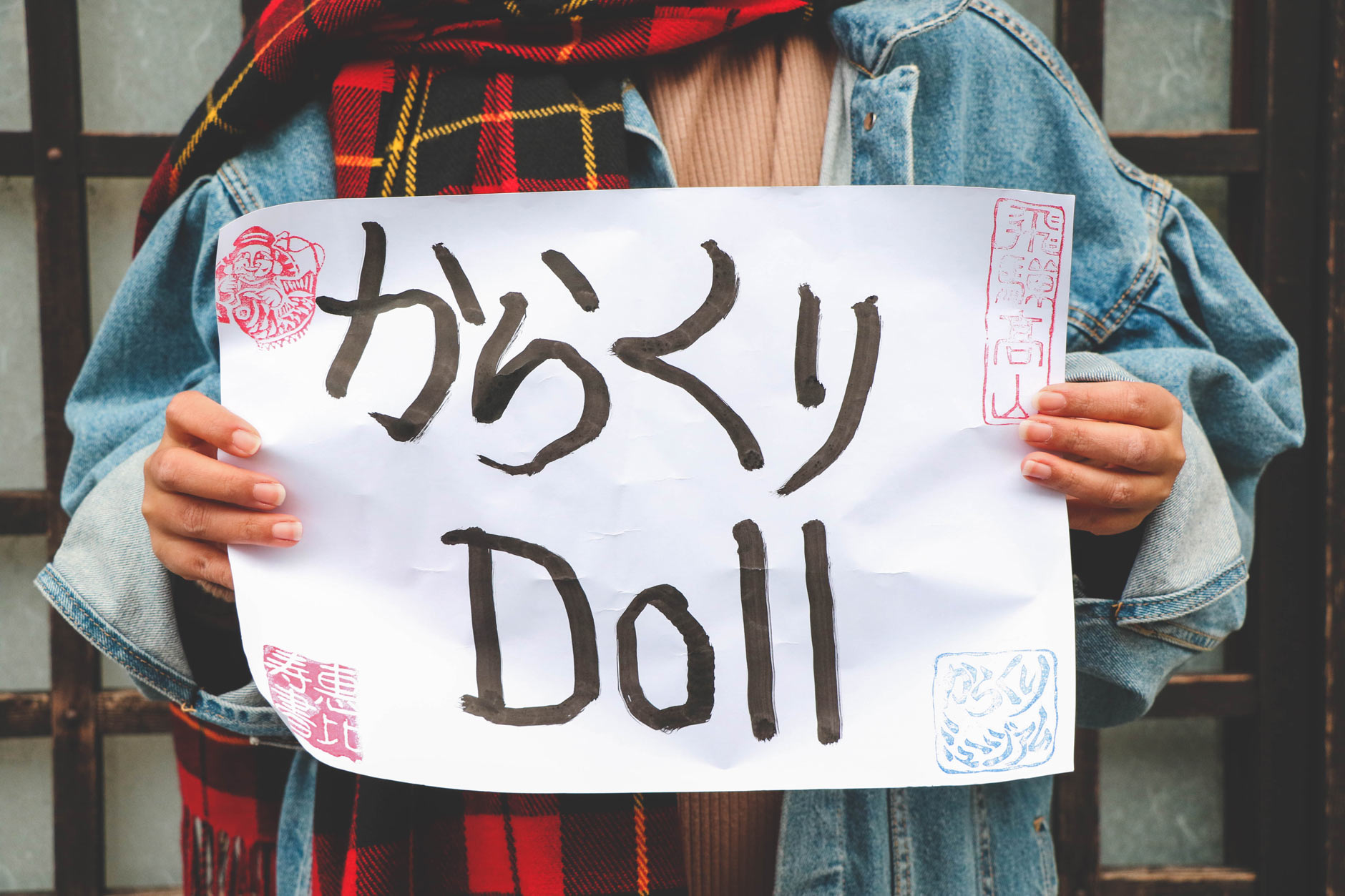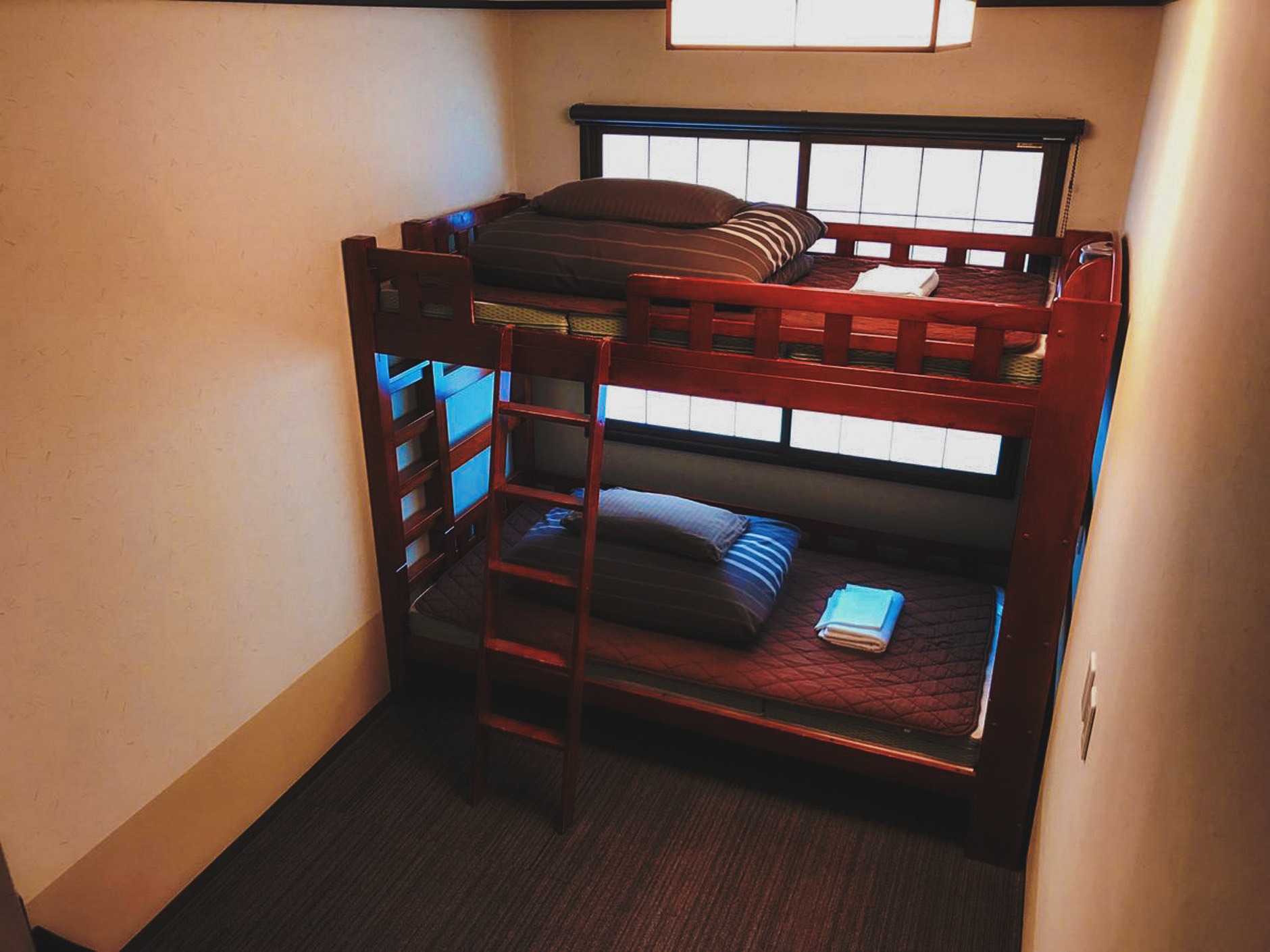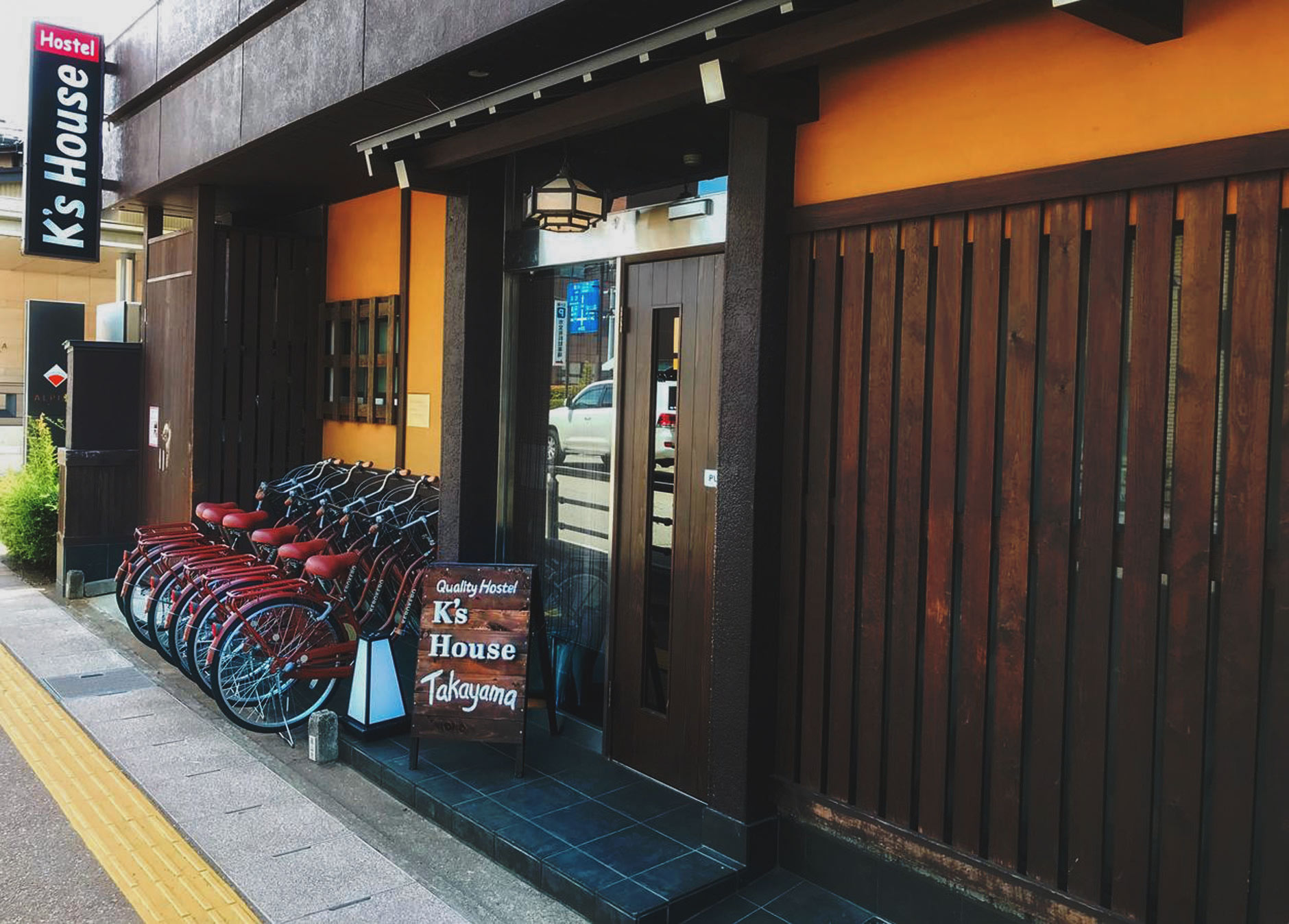Travel Guide to Gifu Prefecture’s Takayama
city nestled between vast mountain ranges and steeped in well-preserved antiquity, Takayama is a charming town for those seeking to experience a traditional getaway.
With its pretty riverside setting and architecture dating back to the Edo and Meiji eras, many have compared Takayama to the likes of Kyoto – a city renowned for its cultural and historical significance. Kyoto represents life in the old capital, preserving the refined styles and traditions of well-known Japanese practices such as kaiseki meals, geisha customs, and ancient Imperial Court life. As opposed to its famous tourist-heavy moniker, Takayama offers a low-key, rustic experience of old Japan developed from its feudal history and its important agricultural roots.
What whispers of the past does Takayama hold to inspire our sense of exploration?
Thanks to its isolated geographical location from other major cities and their influences, Takayama will amaze you with its bountiful nature spots, mouth-watering gourmet food, and homegrown sense of cultural identity cultivated for over 300 years.
History of Takayama
In the past, Takayama was part of an old province area called Hida Province consisting of the northern portion of modern-day Gifu Prefecture. To this day, it is still sometimes referred to by its traditional official name, Hida-Takayama.
Being surrounded by high mountain ranges, the residents of olden day Hida-Takayama had a deep knowledge of the mountains and plants that grew in the area. Thus, many became skilled woodworkers who were well-respected throughout Japan and the area gained recognition as a source for high-quality timber.
During the Sengoku period (between the 15th – 16th century) the samurai lord, Kanamori Nagachika, ruled the area from his residence at Takayama Castle and Takayama began its development as a castle town for samurai warriors and merchants.
Today, the town’s well preserved late 17th-century layout has made it one of the most scenic townscapes to visit. You can still see many traditional establishments running alongside the city’s river as well as plenty of shrines, historical attractions, and hot springs to explore.
akayama has an abundance of museums and local attractions just waiting to be discovered on foot.
Whether you are stopping by on a day trip or staying overnight, here are some highlights of our personal favourites:
Old Township (Furui-machi-nami)
n absolute must-see in Takayama, the Old Township is a preserved cluster of period establishments dating back between the 17th and the 19th century.
It is centered around the Sanmachi-Suji district area, a collection of three main streets (Ichi-no-machi, Ni-no-machi, and San-no-machi) that are linked by the flowing rivers that run through the town.
As you listen to the soft running of the water, you’ll discover alleys of latticed bay
windows and traditional wooden storefronts adding to the timeless feeling that still lingers in the area. Strolling through each street you can find plenty of eateries, shopping, sake breweries, museums, and plenty of examples of old merchants’ houses, traditional inns, and private houses.
Accessing the district will also allow you to walk on the iconic red bridge over Miyagama River, making it truly feel like you have crossed over into another time and space.
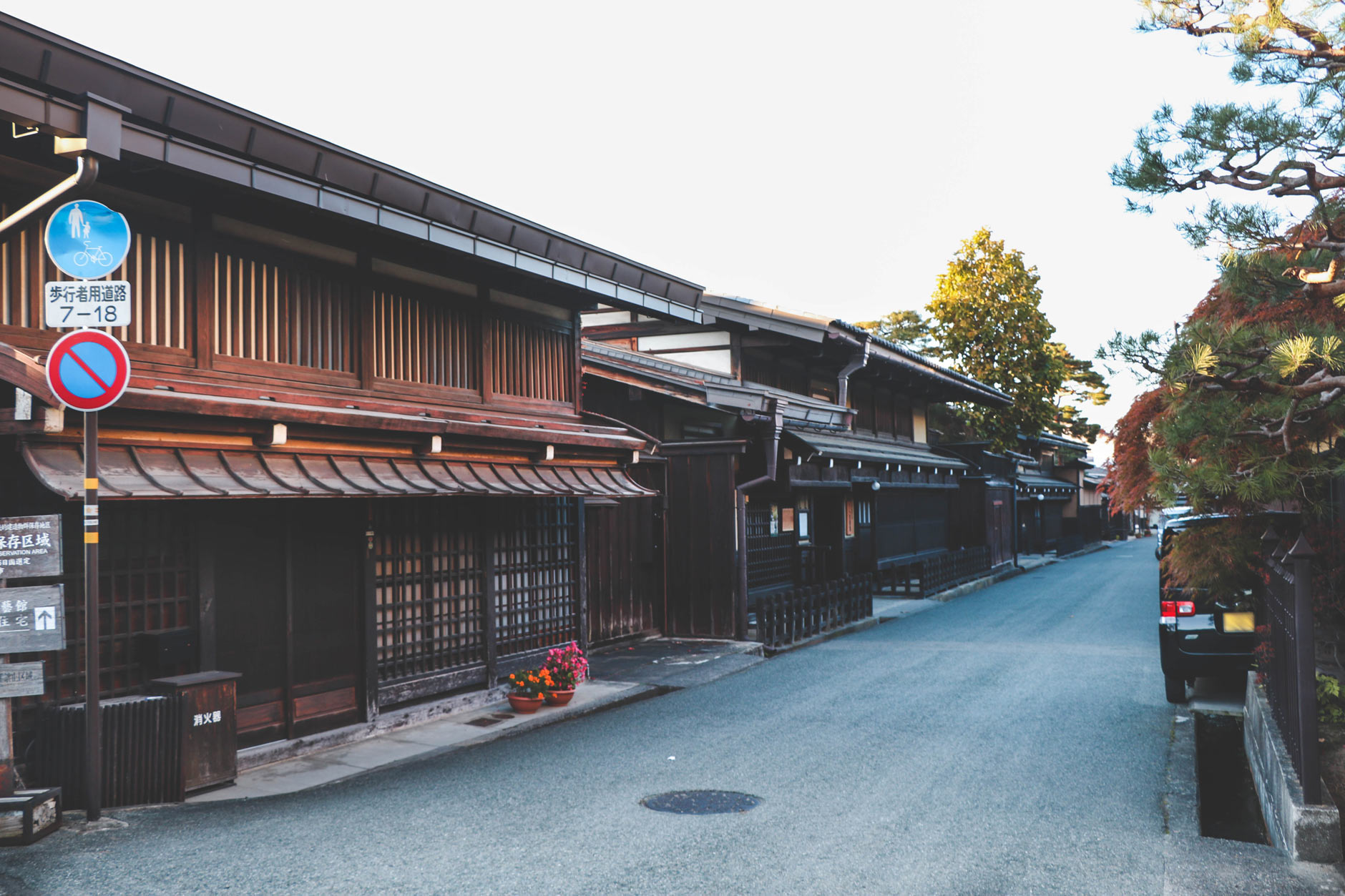
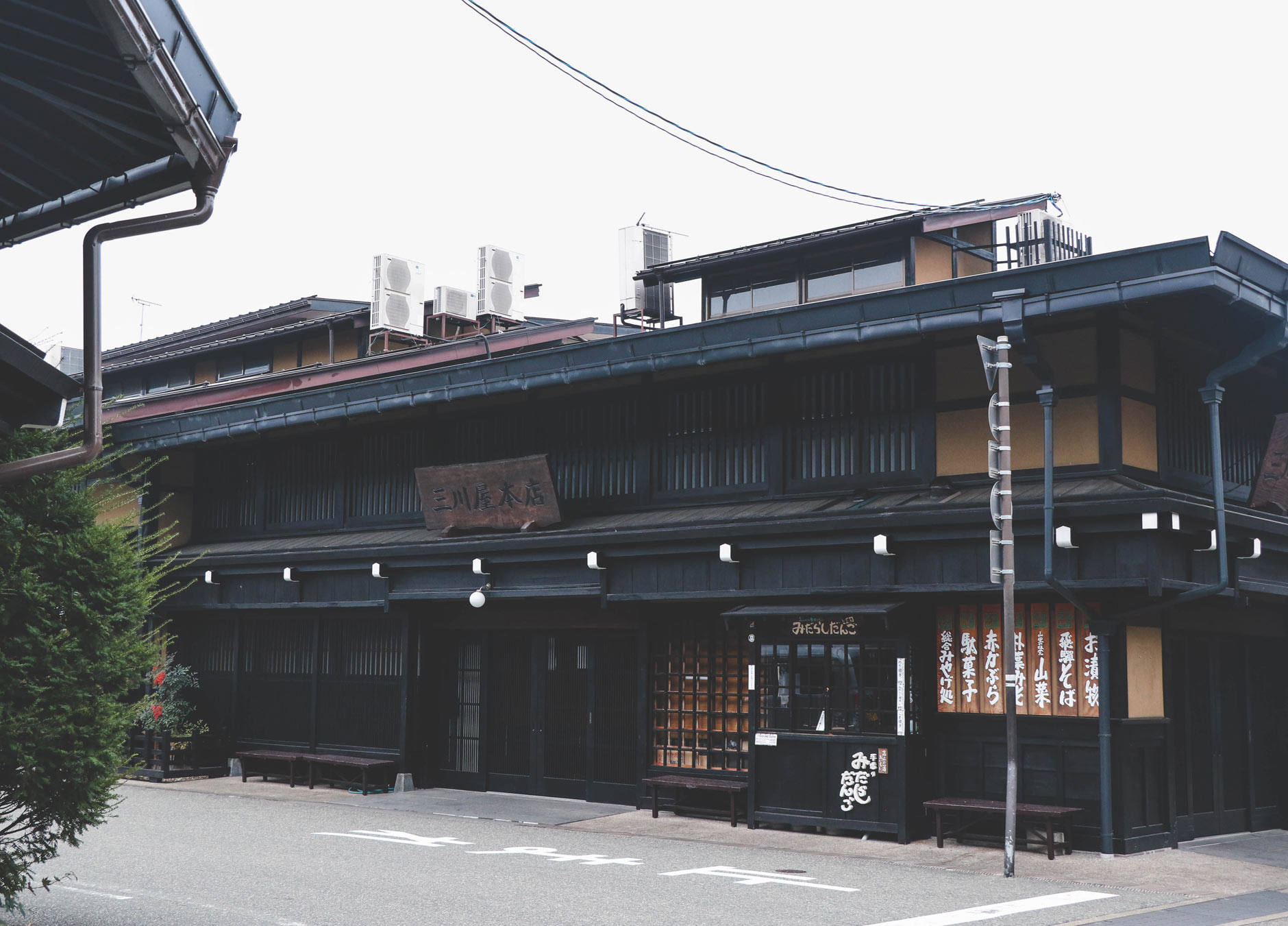
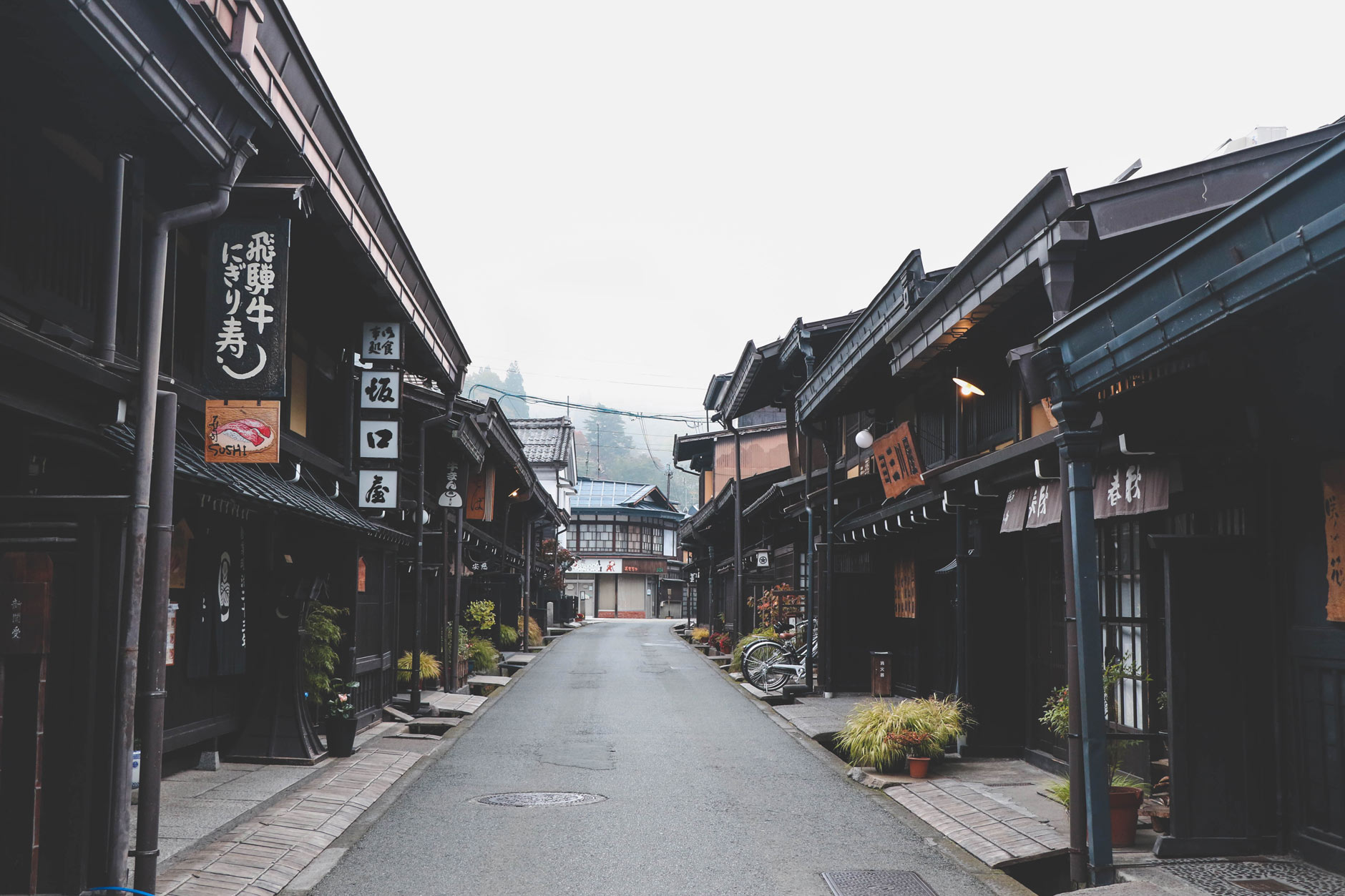
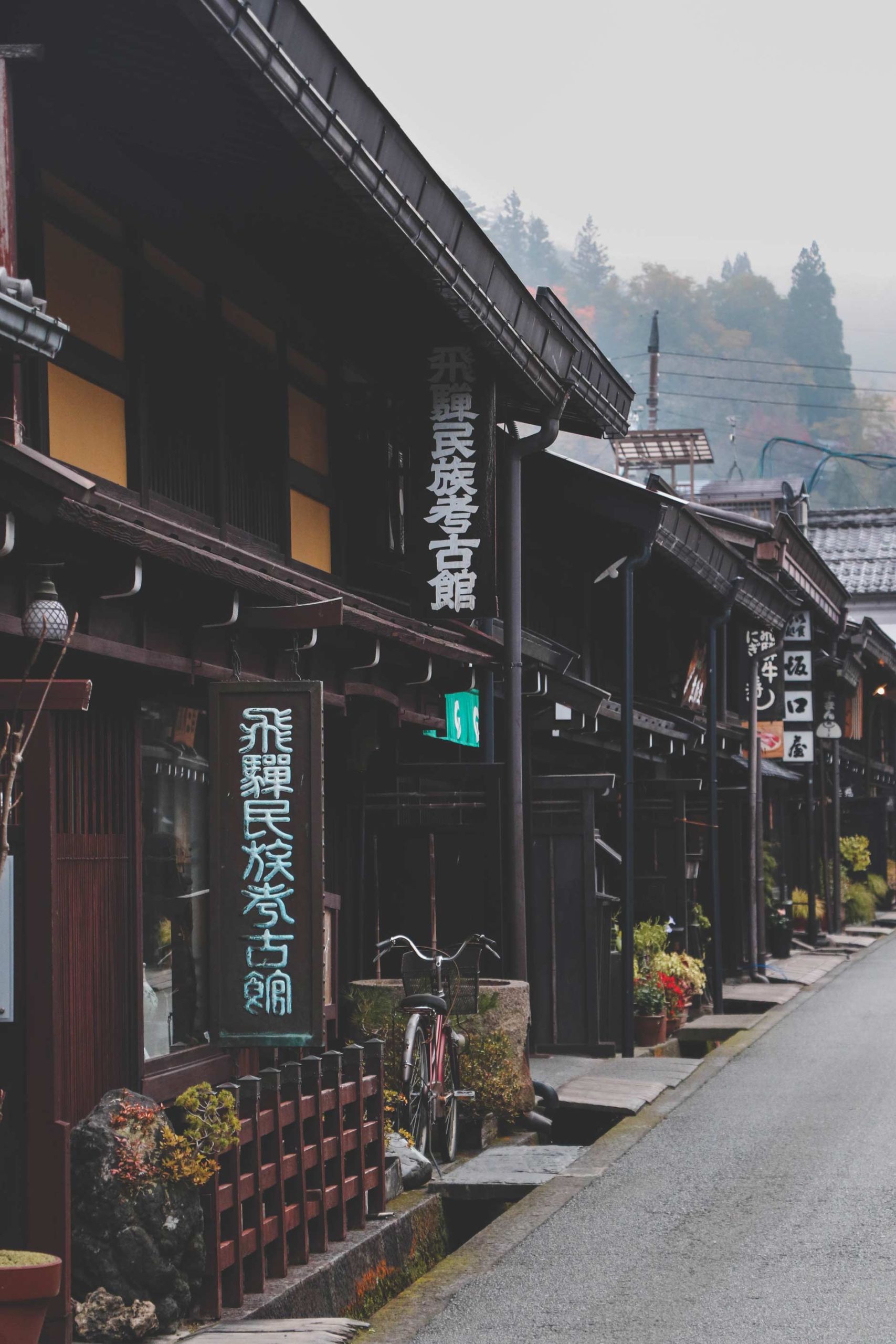
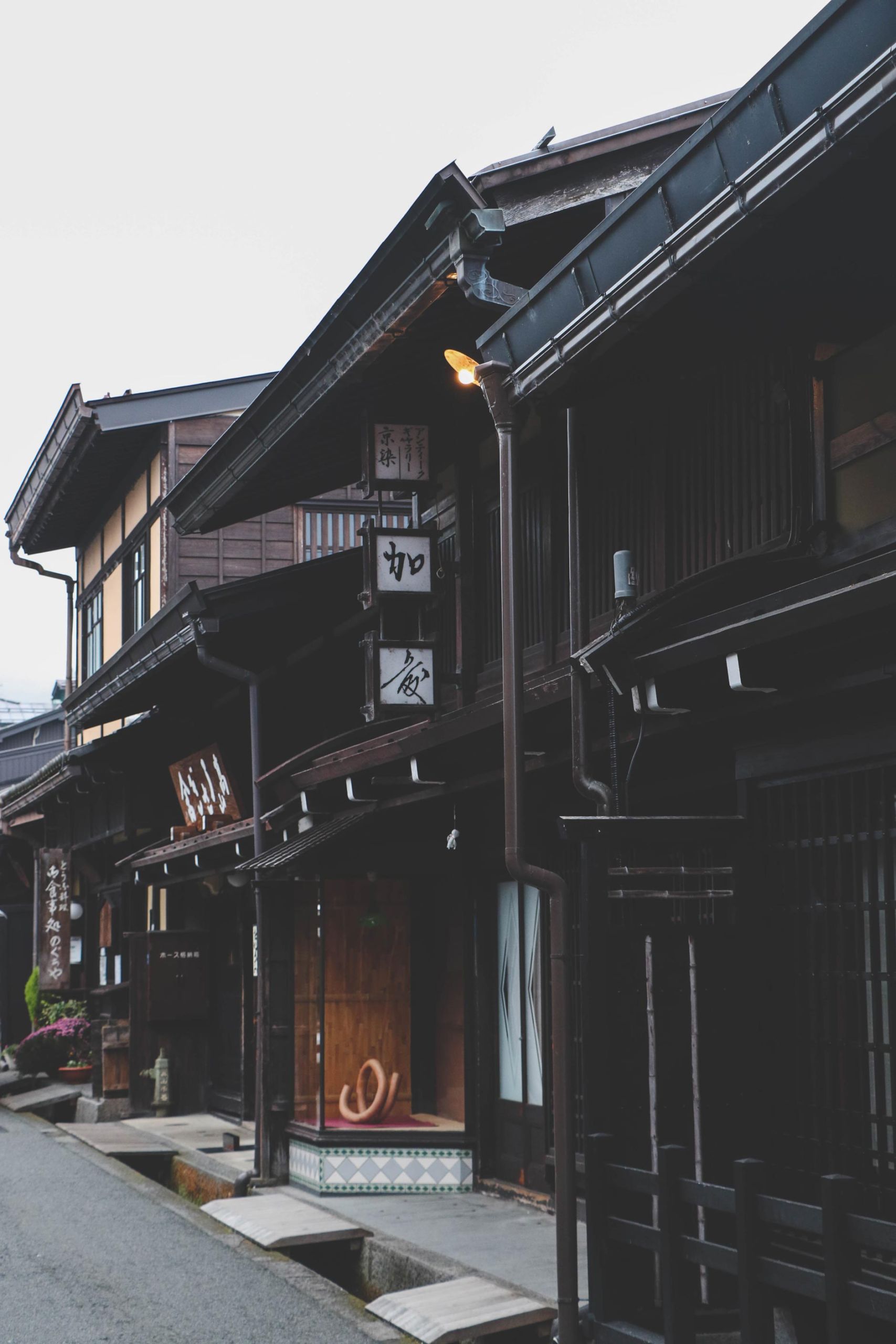
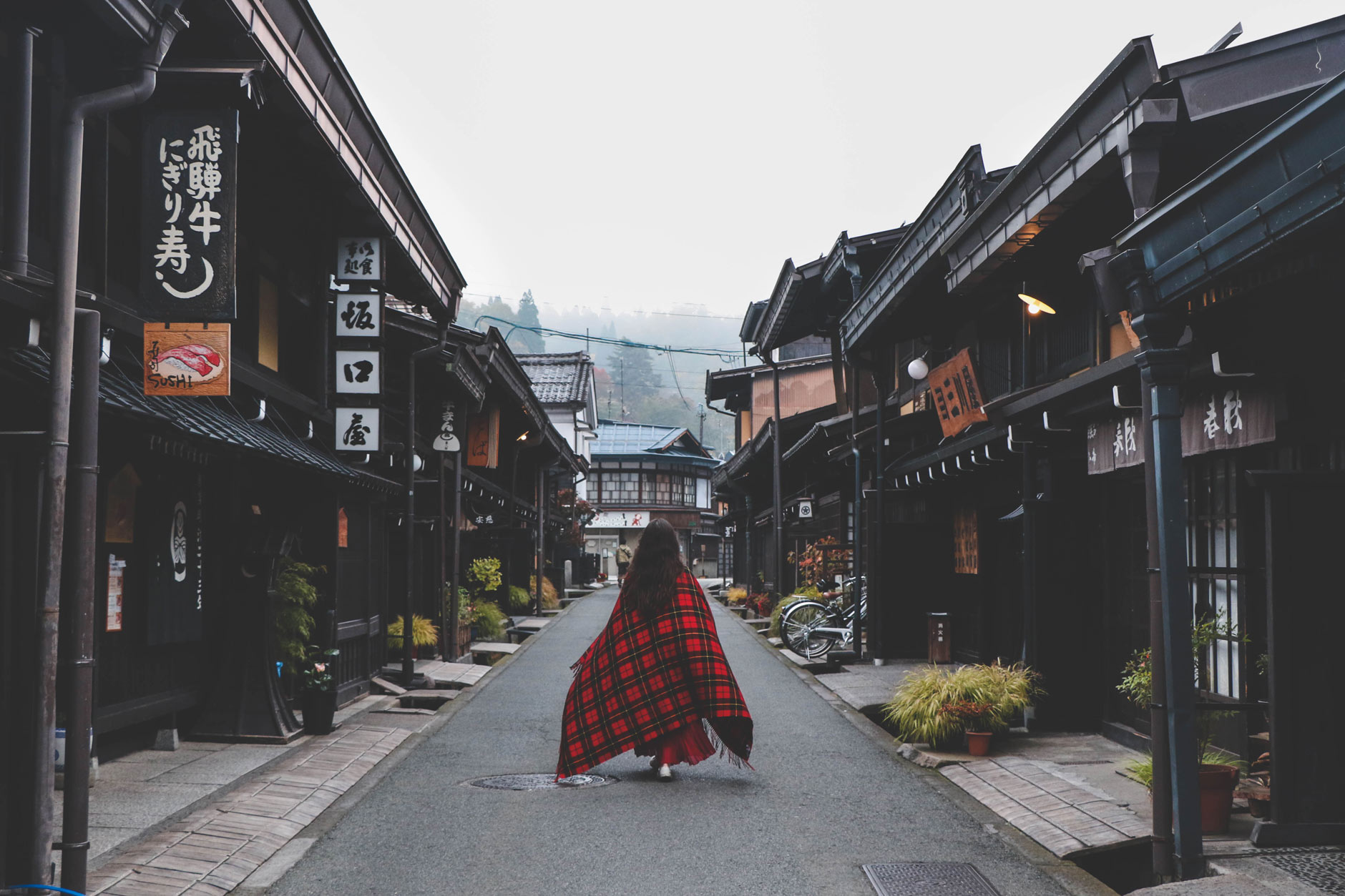
Sakurayama Hachimangu Shrine
here are many shrines in Takayama but one of the oldest is the Sakurayama Hachimangu Shrine and dedicated to the deity Hachiman.
Hachiman has a strong spiritual relationship with Shintoism and Buddhism and is believed to be the divine protector of Japan, its people, and the Imperial Family.
During ancient times, many samurai also worshiped him and peasants worshiped Hachiman as the god of agriculture.
If you happen to visit during Autumn you can also see the annual Chrysanthemum Festival (Bunkyo Kiku Matsuri) where displays of blooming Chrysanthemum flowers and flowering bonsai are on display. Chrysanthemums represent longevity, rejuvenation, and the Imperial Family in Japan.
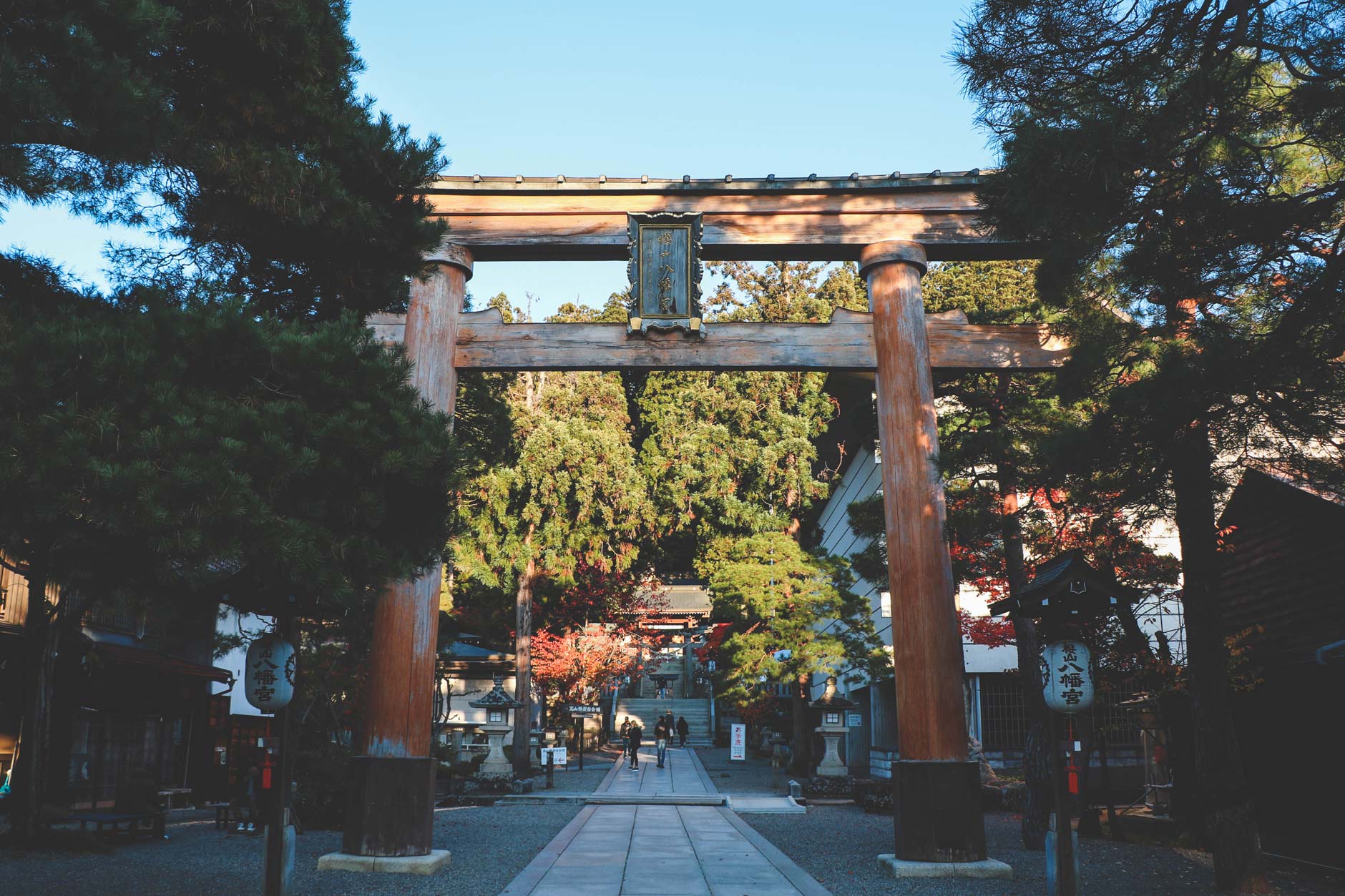
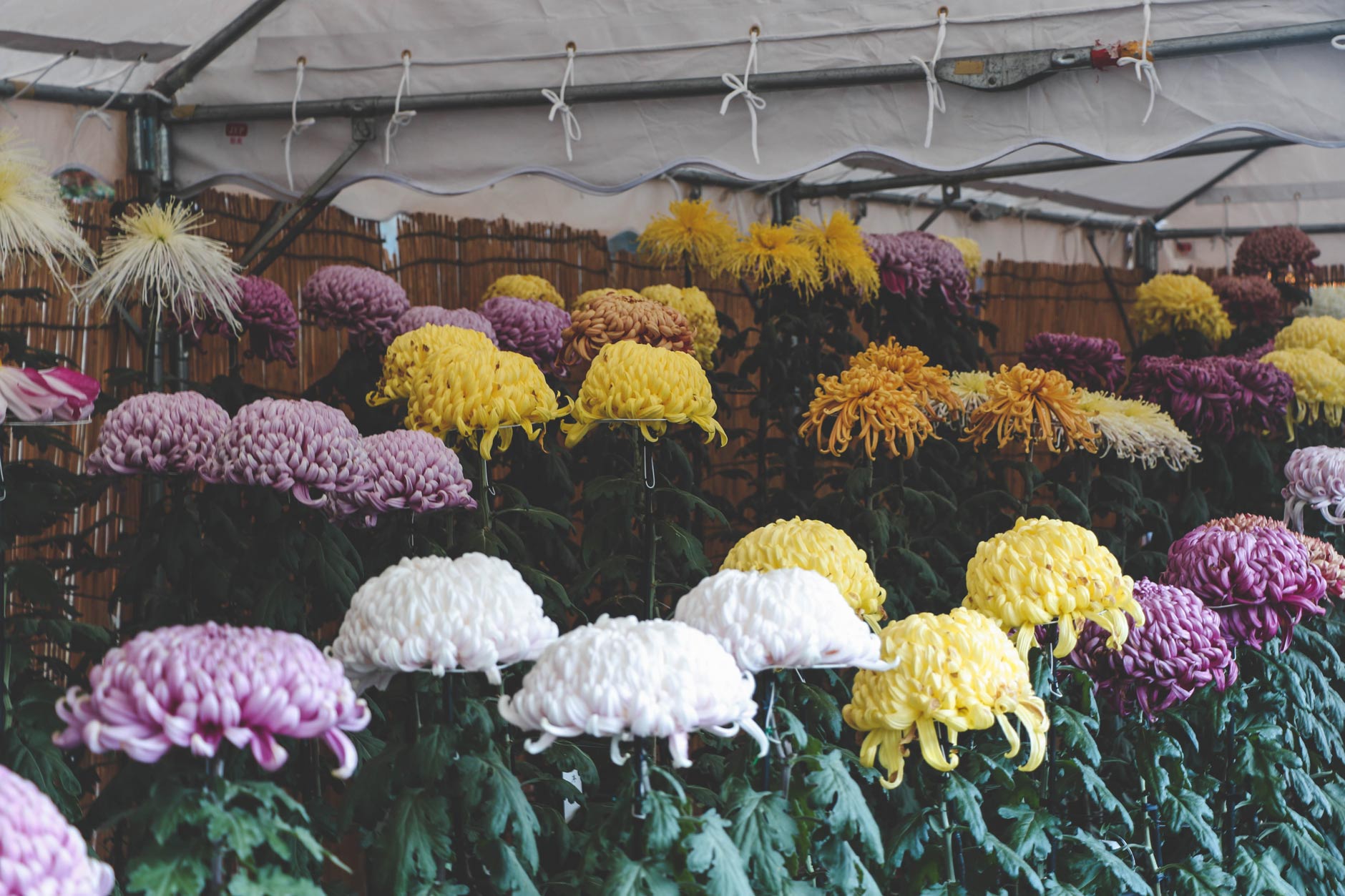
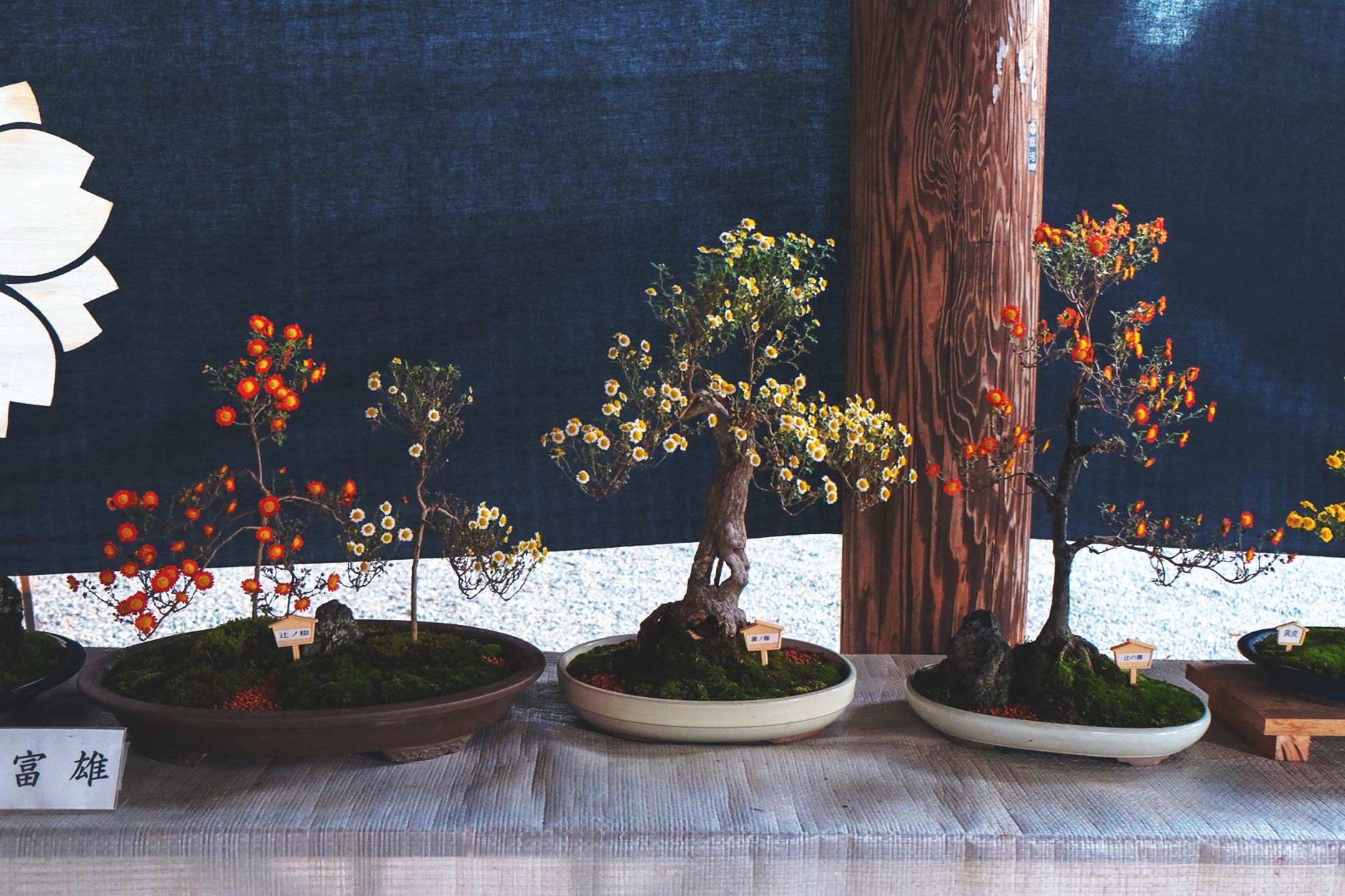
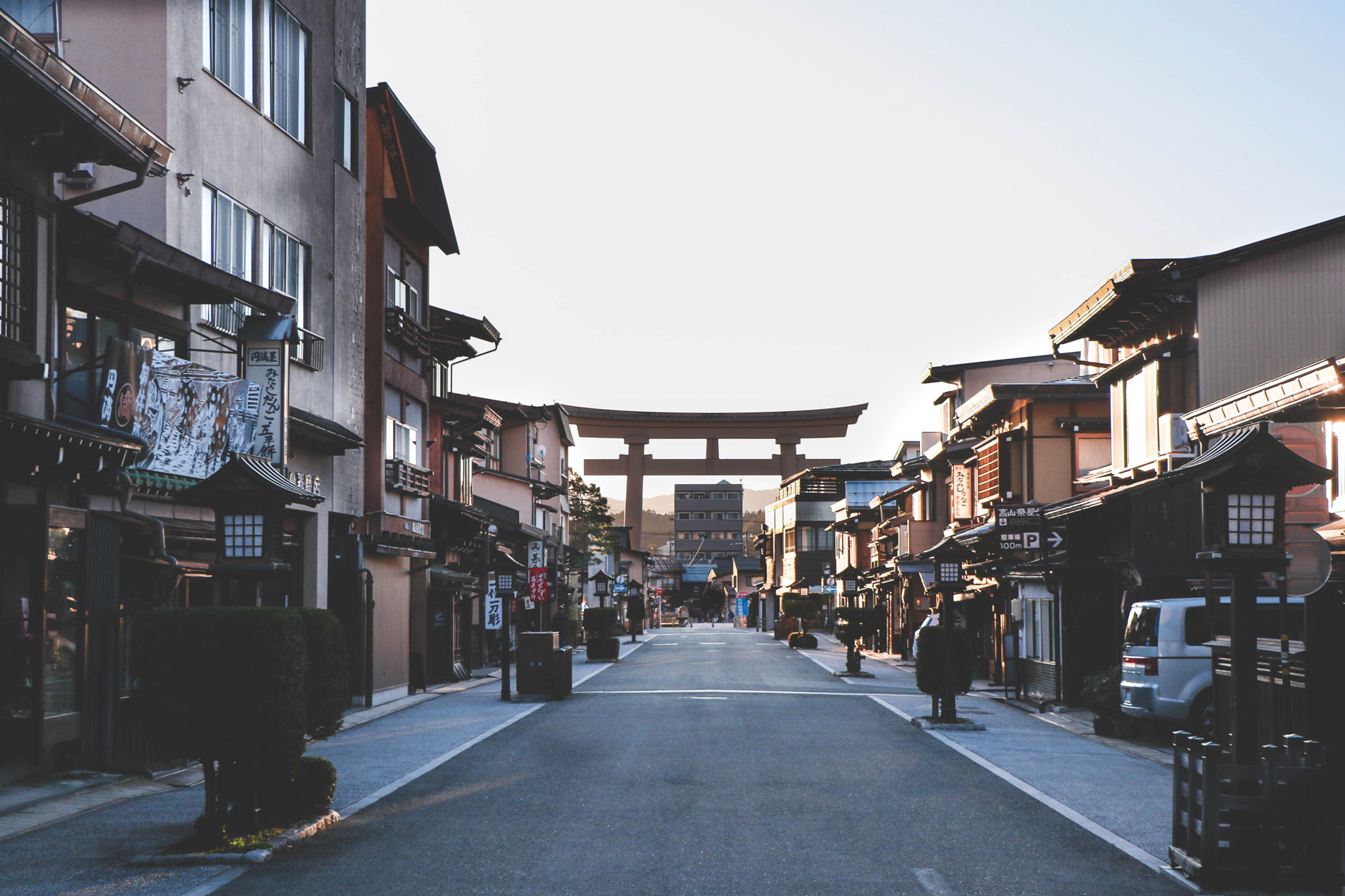
Takayama Yatai Kaikan (Takayama Festival Float Exhibition Hall)
uring the city’s famous Takayama Festival, giant intricately decorated floats called “yatai” are paraded through the city and the Takayama Yatai Kaikan is where you can view and learn more about these stunning works of art.
The yatai used during the Takayama festival are a type called “dashi” which have a strong tie to the folk belief of spirits living within the plants, rocks, and nature of the mountains. These yatai floats were built for these spirits as they were thought to be holy, descended from the heavens. Thus, these yatai are made to resemble
mountains to worship these divine beings. The yatai displayed at Takayama Yatai Kaikan are hundreds of years old and the floats used for the autumn Takayama Festival are rotated three times a year.
When purchasing an admission ticket, you can also receive an audio guide in English to further explain the cultural and historical value these amazing floats have. Being situated within the grounds of the Hachiman Shrine, you may also see a Miko-san (Japanese shrine maiden) stationed at the reception desks and gift store areas.
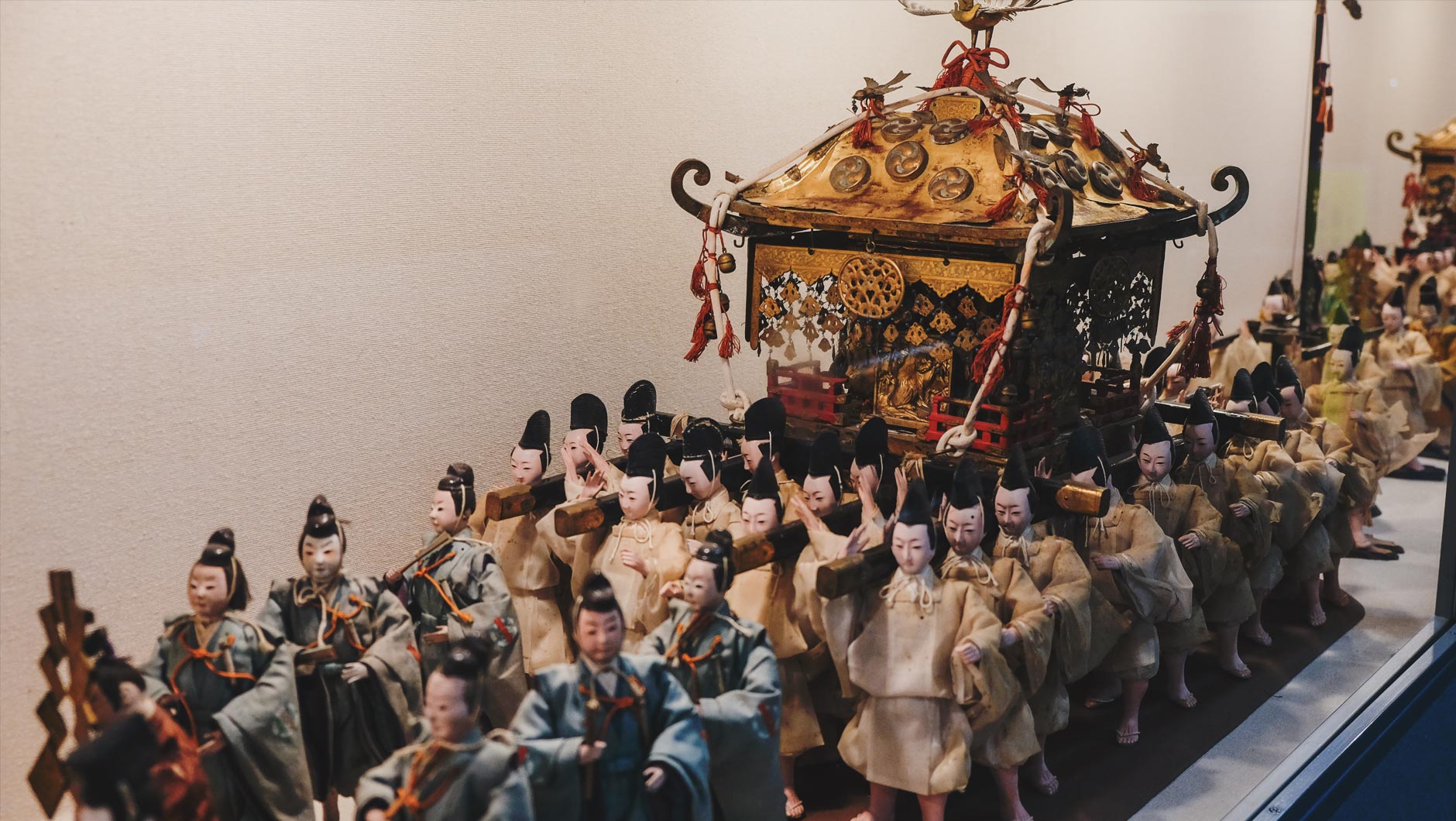
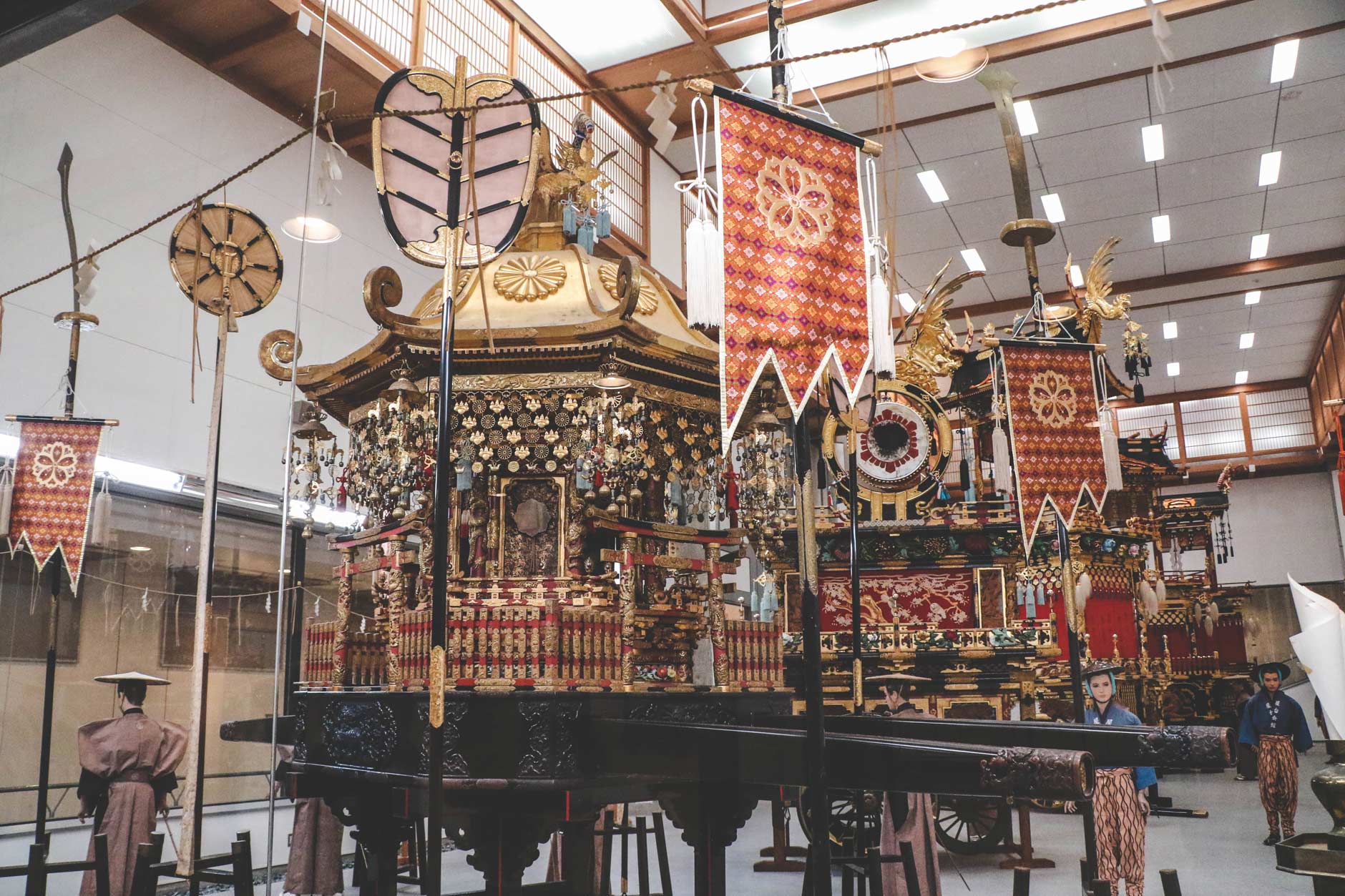
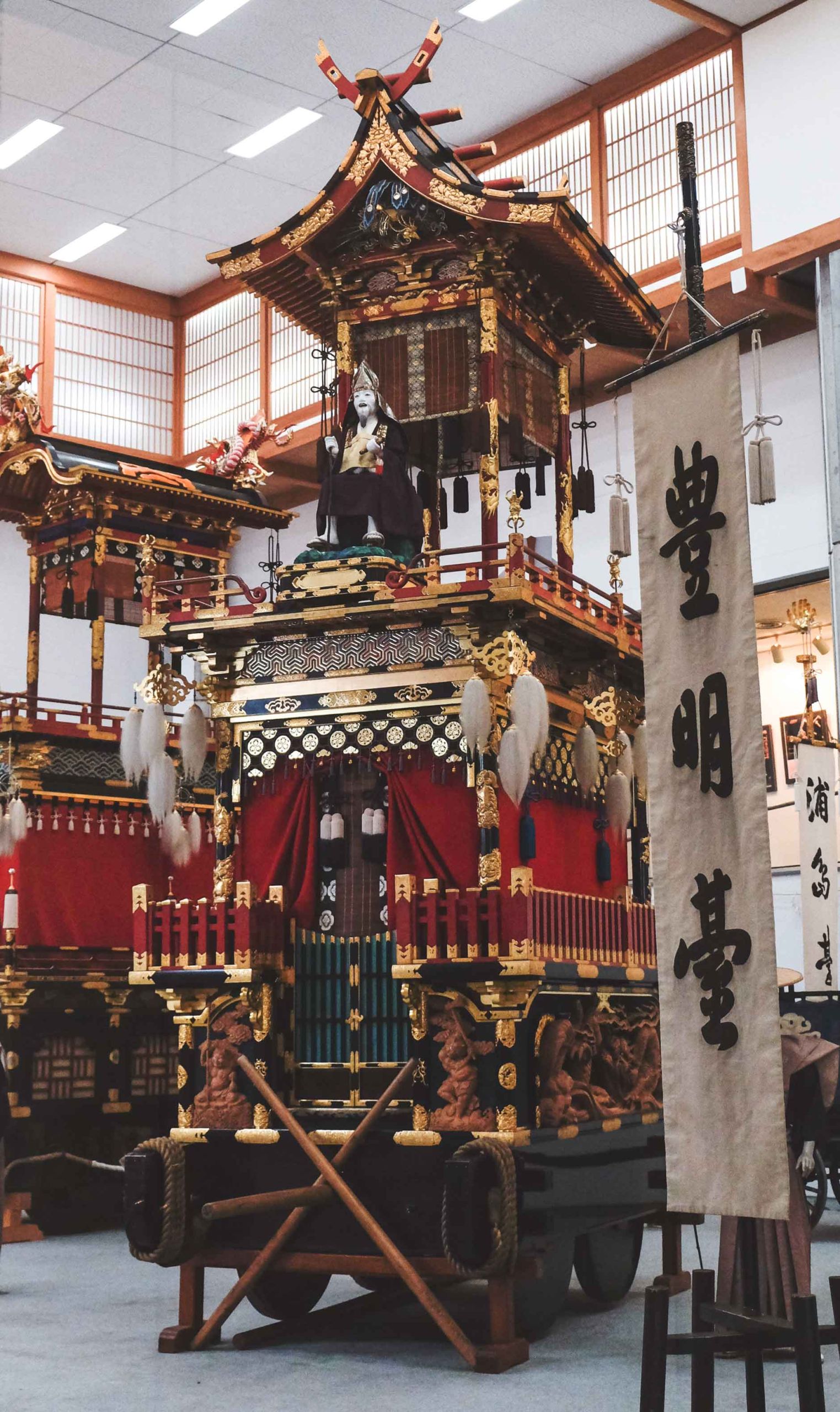
Sakurayama Nikkokan
ith your pass into the Takayama Yatai Kaikan you will also be granted free entry into the Sakurayama Nikkokan next door.
The Sakurayama Nikkokan features a dazzling, highly detailed recreation of the Toshogu Shrine in Nikko built at 1/10th of the scale, as well as other models of famous religious buildings throughout Japan. All the intricate detailing in the ornaments, carving, and paintings have been replicated precariously by famed
carpenters from the Taisho Era and took 15 years to complete.
Though it may seem a bit strange to see a famous cultural site from Nikko being displayed in a totally different prefecture, the craftsmanship of these models and the yatai next door showcases the impressive handiwork of Takayama’s famous artisans. Also to note, the woodwork and the techniques in weaving and dyeing that go into constructing the yatai is so exquisite that it is often compared to the Yomeimon Gate of Nikko’s Toshogu Shrine – one of the most beautiful gates in Japan.
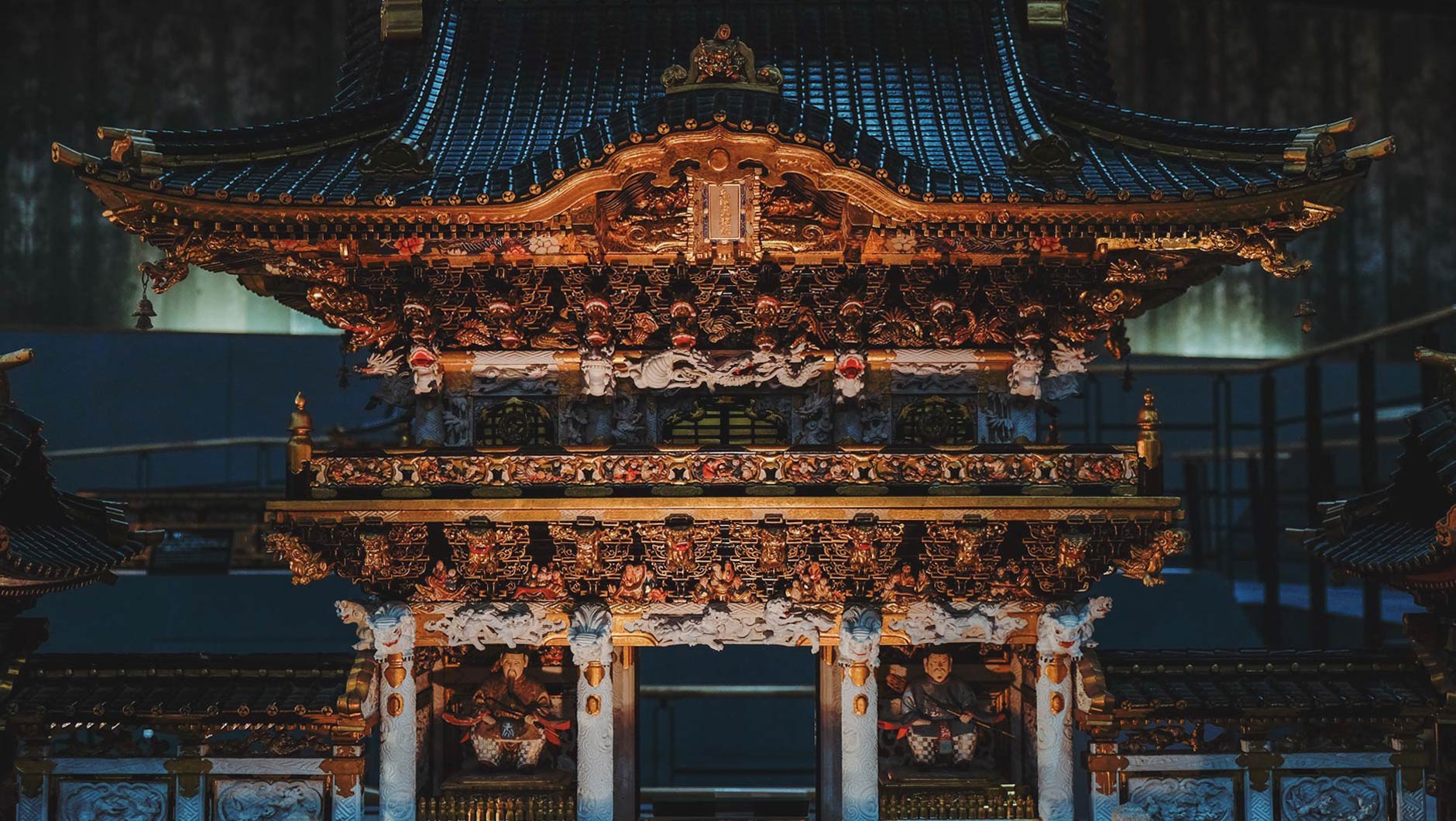
Nikko Toshogu Shrine’s Yomeimon Gate
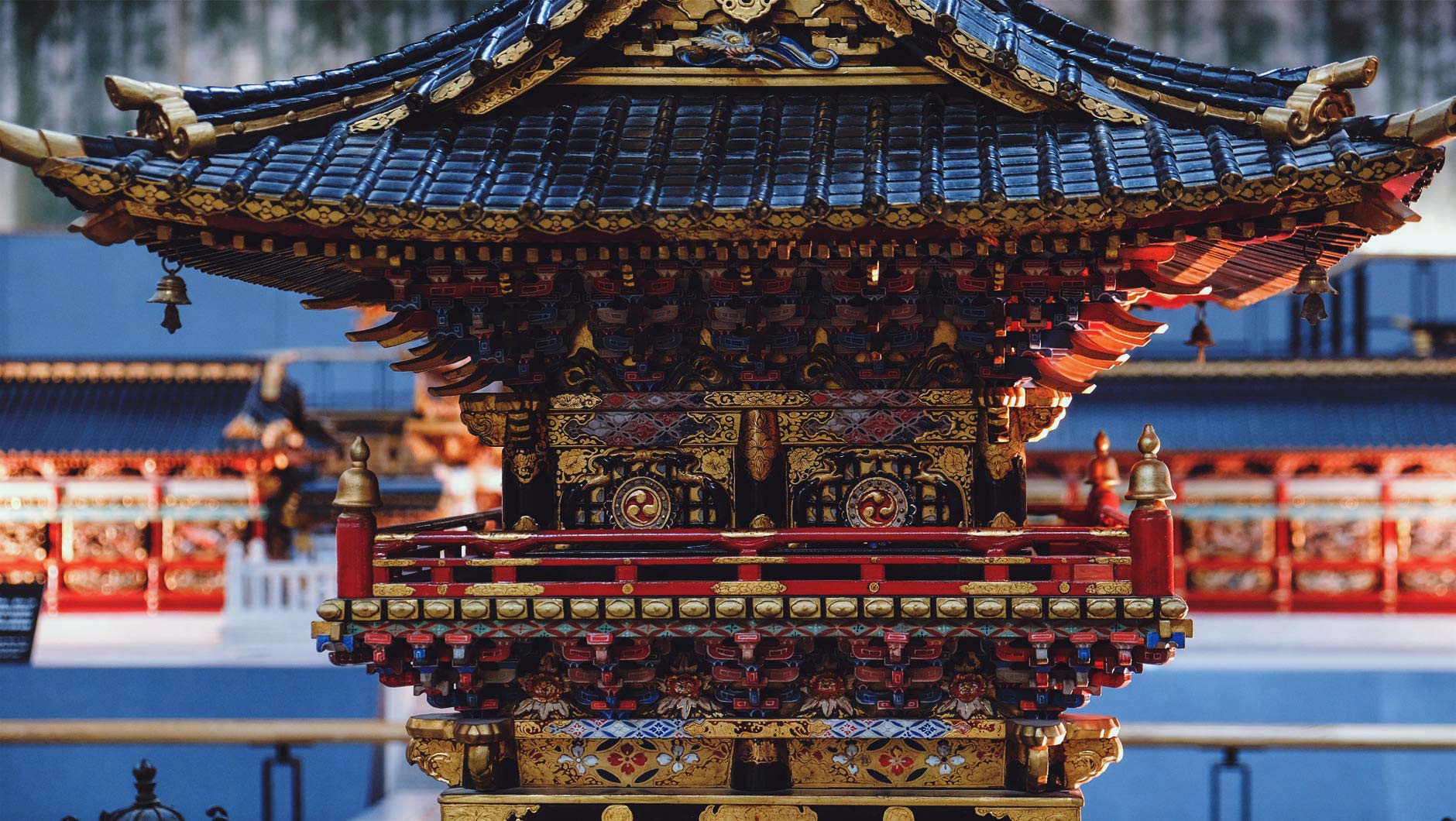
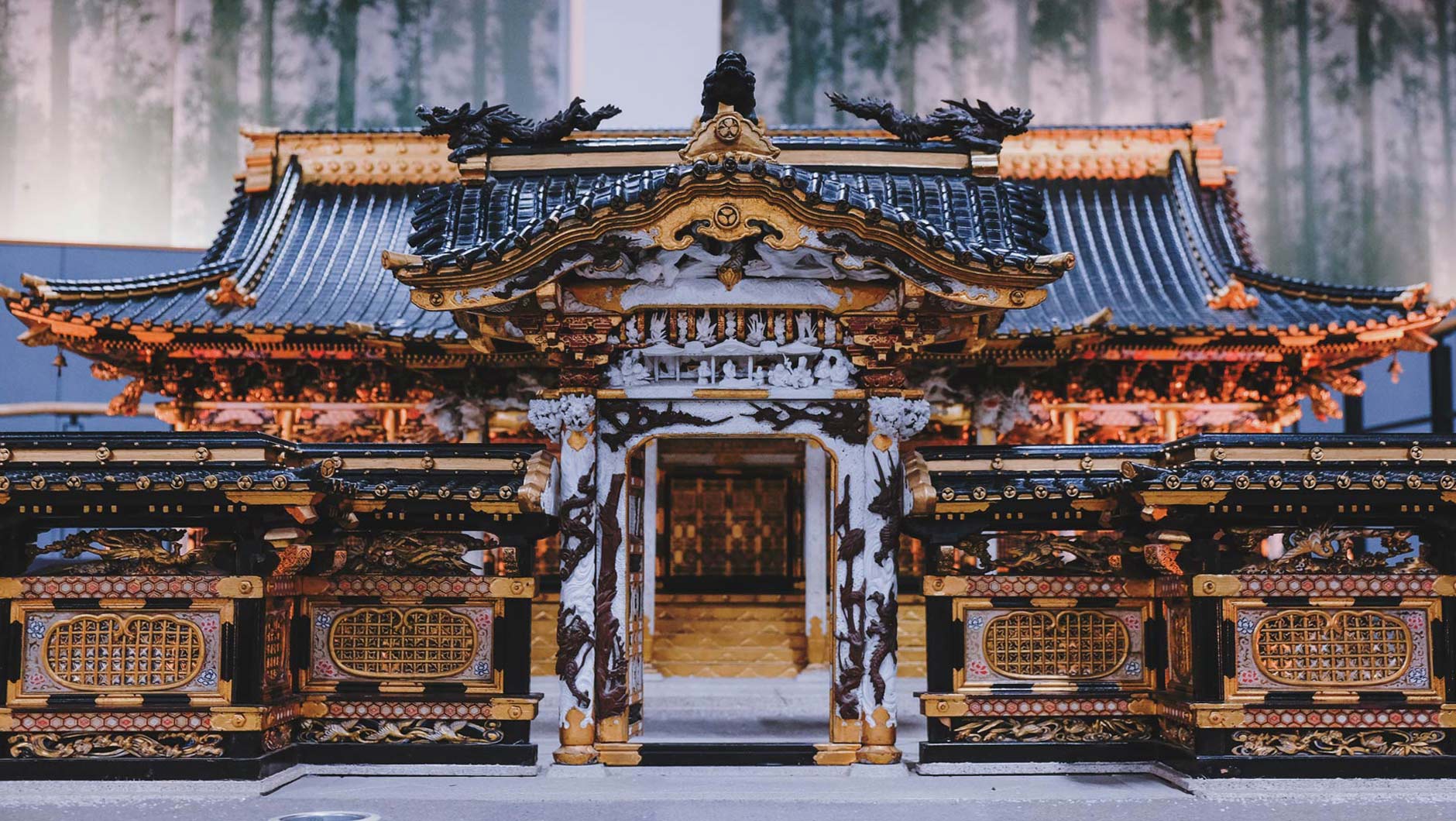
Hida Folk Village
he Hida Folk Village is an open-air museum built along a picturesque hillside featuring thatched wooden houses, shrines, and other historical representations of what Hida Province looked like in the past.
The thatched-roofed houses called “gassho-zukuri farmhouses” date back during the Edo era (1603 – 1867) and have been kept in their original conditions. They were moved to the Hida Folk Village from Shirakawago, an area famous for their gassho-zukuri farmhouses and have received World Heritage status.
You can see many folk artifacts on display showcasing life in the past mountain farming village and demonstrations of local crafts like Hida lacquer, weaving, and dyeing. You can also participate in traditional craft-making such as sashiko quilting and straw craft at the cultural centres.
For those who are unable to visit the World Heritage Site Shirakawago, the Hida Folk Village is a good alternative to still experience the golden days of Edo period farm life.
View this post on Instagram
View this post on Instagram
Takayama morning market (Asaichi)
akayama’s morning market is made up of two local markets; one in front of the Takayama Jinya Shrine and the other along the Miyagawa River. It is said to be one of the biggest morning markets in Japan and a great place for locals and tourists to interact. Shops sell everything from fresh vegetables, dried fruit, spices, Japanese sweets, crafts, and local souvenirs.
The Takayama Jinya Shrine market has a particularly interesting background. Started more than 300 years ago it began with silk farmers selling mulberry tree leaves. To this day, farmers are the only ones permitted to open stalls here. The markets are opened daily and it is best to visit around 6AM to soak up the energetic atmosphere of the stalls being set up for the day.
View this post on Instagram
View this post on Instagram
Takayama Showa-kan Museum
or all lovers of Japanese pop culture, the pop art aesthetics that became mainstream during the Showa period (1926 – 1989) are memorialized through some of the period’s most iconic symbols such as comic book characters like Astro Boy, early idols and propaganda memorabilia.
The Takayama Showa-kan Museum leaves visitors with the perfect impression of what makes this retro style so unique; the fusion of Japanese aesthetics with
American influences.
From the vintage candy and toy store at the front to the perfect recreation of the 1950’s retro streets at the back, the Takayama Showa-kan Museum allows you to enjoy the nostalgia of postwar Japan as you explore through their highly decorated rooms.
The rooms depict different settings inspired by the year 1955 including the street front alley, movie theatre, barbershop, video game corner, general store, and more!
Karakuri Museum and Shishi Hall
f you are lucky enough to witness the Takayama Festival, you may have seen puppet performances on top of the giant yatai floats parading through the streets.
These puppets are called karakuri puppets – mechanised moving marionettes with gears, levers, and strings – that emerged during the Sengoku Period after the introduction of European clock-making to Japan.
These puppets are used in puppetry performances doing tricks or retelling folk stories as a form of entertainment, especially during the height of its popularity during the Edo Era. The concealment of any gears and mechanics as well as the
puppeteer hidden behind stage platforms gives the impression that these puppets are moving by themselves.
Luckily, you don’t have to wait for the next Takayama Festival to see these puppets in action as the Karakuri Museum holds performances every 30 minutes. Seeing them perform and understanding their craftsmanship is impressive considering this is a time before the modern inventions of robots and AI.
The museum also showcases an impressive collection of over 200 lion dance masks called “shishimai” from all over Japan.
What to eat
rom restaurant establishments with long culinary histories to humble street food fanfare, Takayama’s local food scene gives you the best of what the mountain region has to offer.
Of course, we covered some of the best must-eats in our Takayama food guide but here’s a few more to get your taste buds salivating:
Highland Produce
eing located in the mountains producing clean spring water and high altitudes of fertile soil, Takayama is home to some of the freshest fruit and vegetables including mountain vegetables called “sansai,” root vegetables, peaches, apples, and melons.
Tomatoes and spinach are also the most popular vegetables grown in this region. The tomatoes are said to be incredibly sweet and the local spinach has no bitter taste.
View this post on Instagram
View this post on Instagram
River Fish (Wasakana)
popular dish in Takayama is Wasakana or river fish marinated in sweet soy sauce or salted and grilled.
You can eat it as a side dish with rice or a topping in your noodle soup and these river fish are usually of two kinds of river trout, Ayu and Iwana.
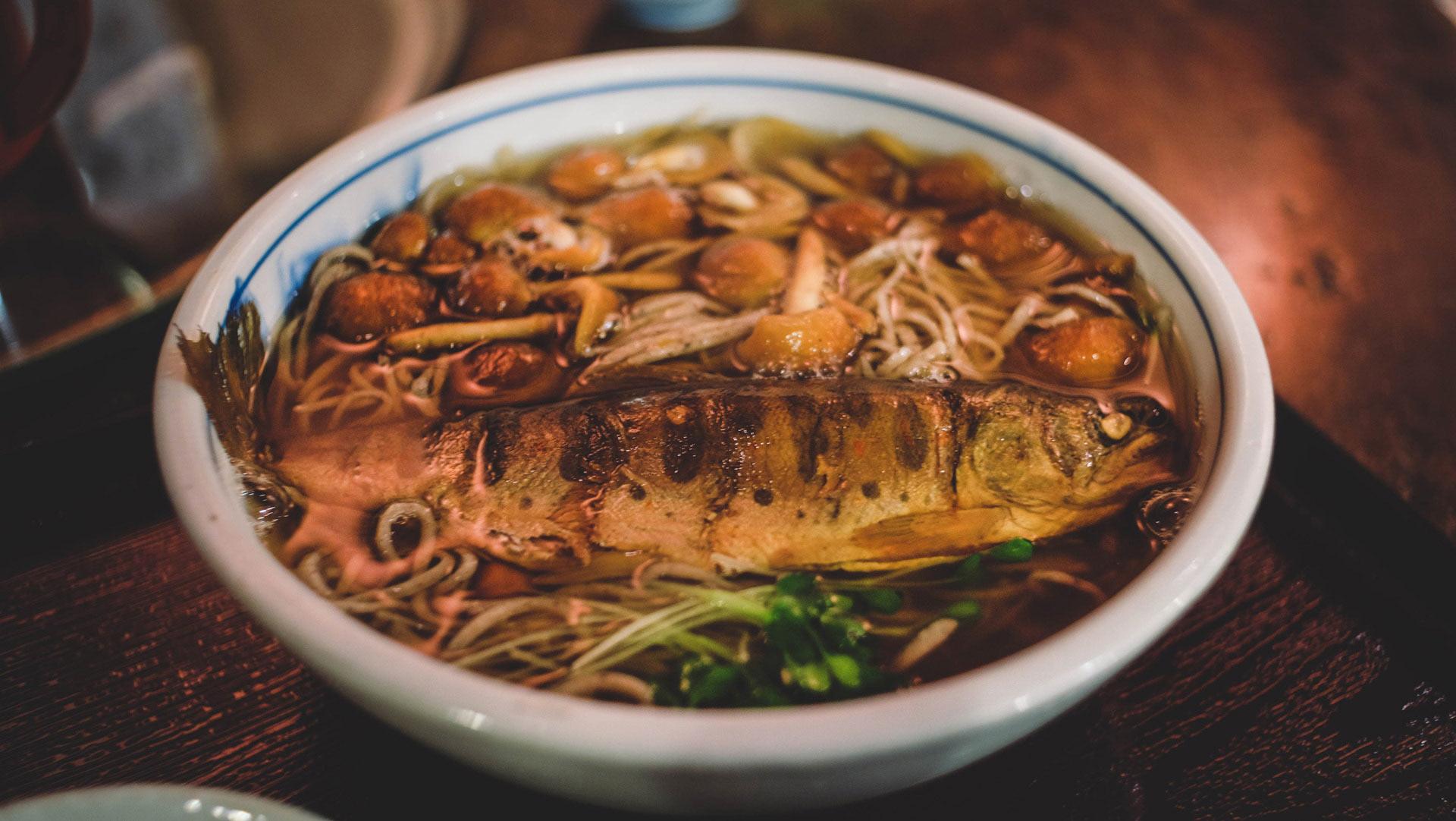
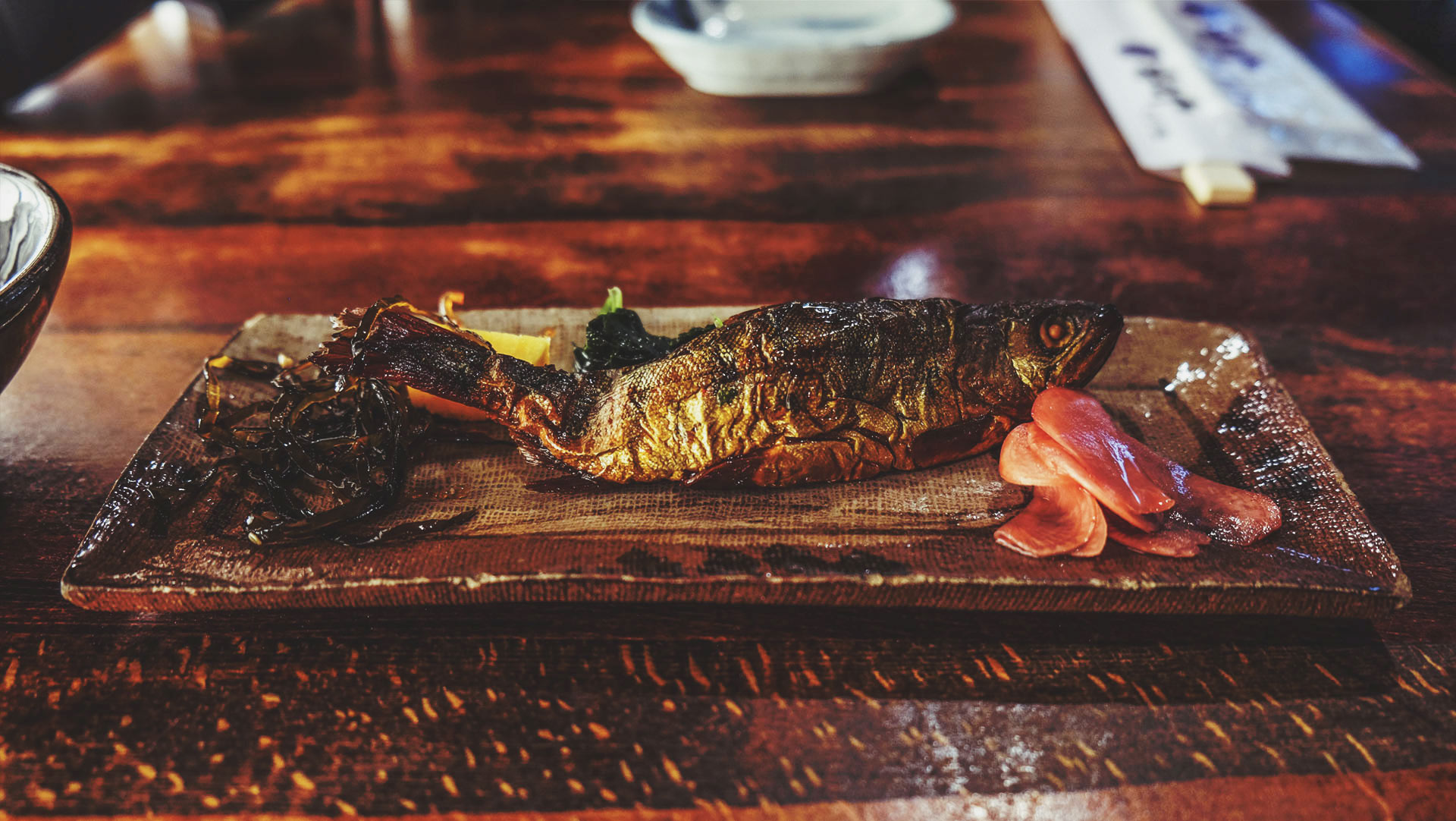
Pickled Vegetables
eing plentiful with vegetables, Takayama has many varieties of pickled vegetables.
The local specialty is pickled red turnips called “Aka kabu zuke” and
are crunchy in texture with a slightly sour-salty taste. This iconic purplish-red turnip is mainly grown in the Takayama area and is called “Hida beni kabu.”
View this post on Instagram
View this post on Instagram
Houba (Magnolia Leaf)
he people of Takayama did not only use the plants found in the mountain forests for solely woodwork but also infused this with their local cuisine as well.
The Japanese magnolia tree grows abundantly in the mountainous areas of the Gifu prefecture and is not widely found throughout Japan. Collected in the autumn it has a delicate fragrance and is used in cooking as a layer for flavour when grilling meat or wrapped around mochi and sushi.
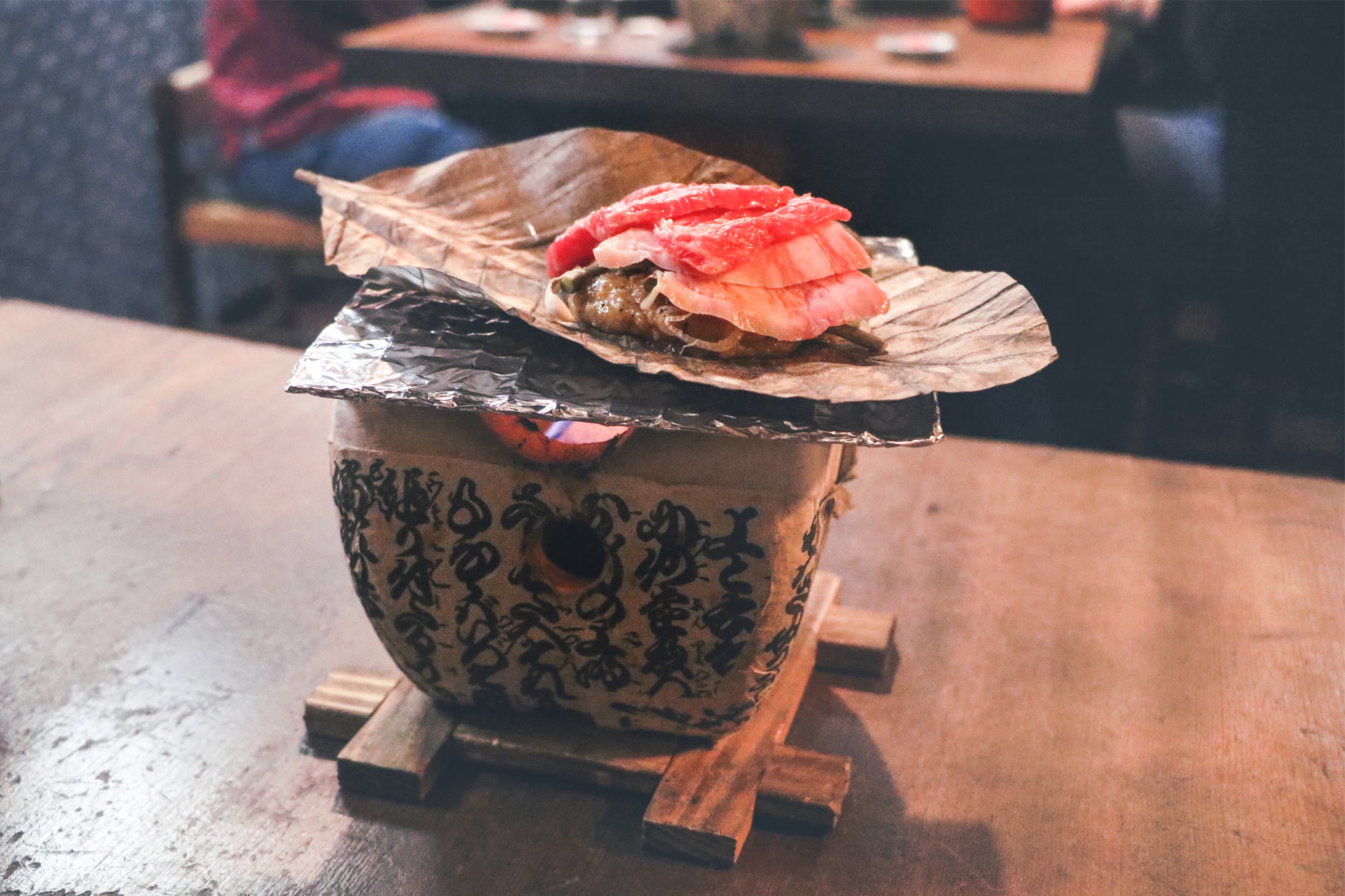
Hida Beef on top of a Houba Leaf
Local Sake
akayama’s location in the Japan Alps makes it ideal for sake production and at its peak as a castle town, there were more than 60 sake breweries in Takayama.
The rice produced in Takayama is called “Hida-Homare” rice and is said to have the
five taste elements of sweetness, spiciness, sourness, astringency, and bitterness.
Today, only 7 sake breweries still remain in the old town district and are hundreds of years old.
View this post on Instagram
View this post on Instagram
What to See
very month, there are a wealth of local events in Takayama happening throughout the year.
However, the most famous event and one of the country’s most beloved festivals is the Takayama Festival.
Takayama Festival
he Takayama Festival is held twice a year to celebrate spring and autumn and is ranked as one of Japan’s three most beautiful festivals making it on UNESCO’s Intangible Heritage List.
During each festival, the giant yatai floats are pulled through the streets and you can see Karakuri puppet doll performances and a Mikoshi Procession. It is said the
mikoshi shrine carriage contains the celebrated shrine’s deity and only leaves the shrine for the festival. There is also an evening festival for night festivities.
Seeing the festival floats during the lavish parade is a truly spectacular sight and each yatai float displays the wealth and skills of the area it comes from in the Takayama area.
Spring Takayama Festival
he spring festival is held in the southern part of Takyama’s Old Township on April 14 – 15.
It is sometimes called Sanno Festival as it is celebrated around the
Hie Shrine also known as “Sanno-sama.” The shrine is dedicated to family safety.
The spring festival is to pray for a good harvest and the coming of spring.
View this post on Instagram
View this post on Instagram
Autumn Takayama Festival
he autumn festival is celebrated at the northern end of Takayama’s Old Township on October 9-10 and is also known by another name, Hachiman Festival, as it is celebrated around Hachiman Shrine.
The shrine’s god, Hachiman, is the divinity of archery and war but is also worshiped
for good agriculture and fishing.
The autumn festival is celebrated as an extravagant way to show thanks for the year’s harvest.
View this post on Instagram
View this post on Instagram
Where to Stay
or an affordable and comfortable stay in Takayama, we recommend K’s House Takayama.
It is a hostel-style accommodation with simple furnishings in the rooms and amenities such as laundry service, shared kitchenette, and bike rental available.
What surprised us was the very comfy furnishings in the common room areas styled
in a traditional Japanese aesthetic that you can enjoy during your stay.
It’s a great place to stay whether you are the kind of traveller who wants the freedom to do things at your own pace, or get friendly with the locals and chat with the friendly hotel staff and other fellow travellers.
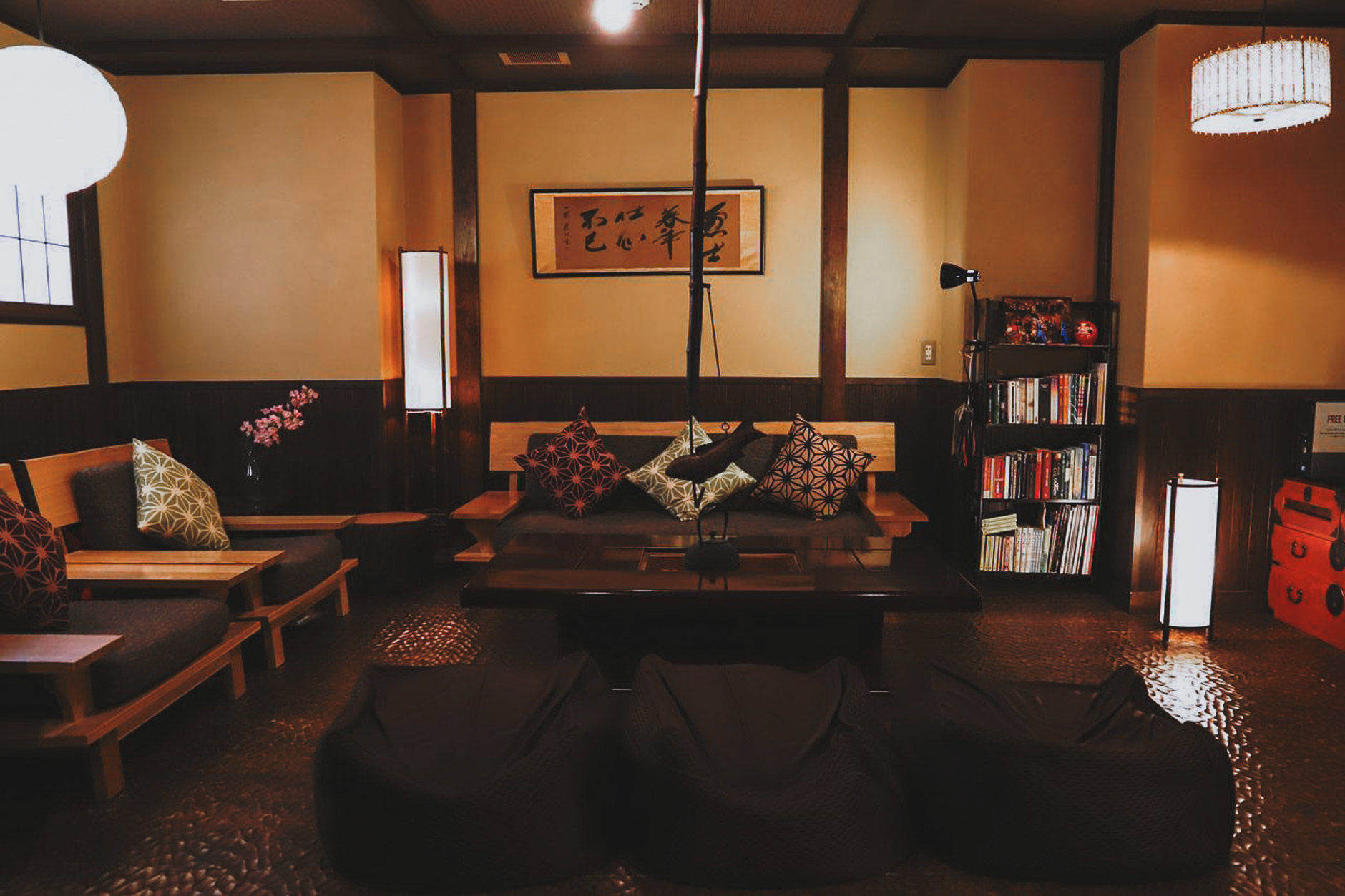
Photo Credit: K’s House Takayama
How to get there
By Bullet Train from Tokyo via Toyama
Take the JR Hokuriku Shinkansen from Tokyo to Toyama and then at Toyama Station take the JR Hida limited express train to Takayama.
The journey from Tokyo to Toyama by bullet train will take 4-5 hours and costs ¥15,500 one way. From Toyama to Takayama it will take a further 1 hour and 40 minutes and costs ¥3,420.
By Bullet Train from Tokyo via Nagoya
Take the JR Tokaido Shinkansen from Tokyo Station to Nagoya Station and transfer to the JR Hida limited express train to Takayama.
The bullet train ride takes 1 hour and 40 minutes and costs ¥11,090 and the limited express train will take 2 and a half hours and costs ¥6,140.
By Highway Bus from Tokyo
From Shinjuku’s largest bus terminal called “Busta Shinjuku” take the highway bus operated by Keio and Nohi Bus directly to Hida-Takayama.
A one-way trip costs roughly ¥6,000 – ¥7,000 and takes 5 and a half hours. You can make online reservations through Willer website.
By Plane
If you take a plane, you have the option of two airports:
Via Toyama airport
You will need to start at Toyama Airport and take a Toyama Airport limousine bus to Toyama Eki Mae. From Toyama Eki Mae bus stop, walk to Toyama Station and take the JR Hida limited express train to Takayama.
The whole bus and train journey will take roughly 2 hours and 40 minutes and costs roughly ¥4,000.
Via Matsumoto airport
You will need to start at Matsumoto Airport and take the Matsumoto Airport limousine bus to Matsumoto Bus Terminal.
From Matsumoto Bus Terminal bus stop you will need to take an express highway bus to Takayama Nohi Bus Center run by ALPICO GROUP. You can book online the express bus from Matsumoto to Takayama in English, too.
By car
You can easily drive from Tokyo to Takayama which will take 4.5 – 5 hours or you can hire a car at Toyama Airport like we did and it will only take 1 hour and 40 minutes. We rented our car via Nippon Rental.
Need a place to stay in Takayama? Use our handy widget to find the perfect accommodation:



